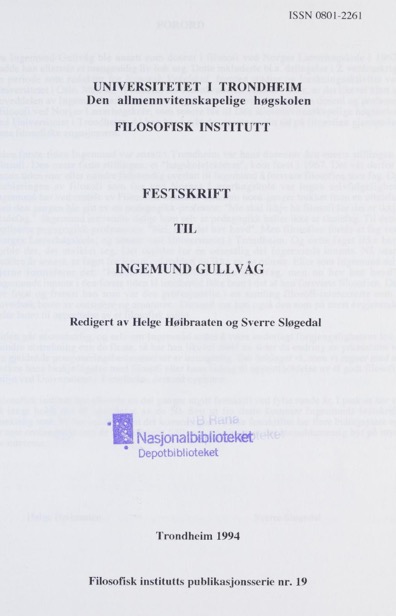PUBLICATIONS (125)
[se også min post i databasen Cristin]
____________________________________________________________________________________________________________
Materstvedt LJ. (2024). «Min bok 'Dødshjelp': en sluttkommentar». www.materstvedt.net [under arbeid, dato kommer når artikkelen er tilgjengelig].
Materstvedt LJ. (2023, 2. opplag). Dødshjelp – begreper, definisjoner, lover, klinikk og etikk [Assisted dying – concepts, definitions, laws, clinical and ethical matters]. Bergen: Fagbokforlaget.
Denne lille boken er et vitenskapelig arbeid med et todelt siktemål: Den retter seg mot personer fra en rekke fagfelt som på ulike vis enten forsker på dødshjelp – som jeg definerer i kapittel 1 – eller som gjennom sin forskning tangerer temaet på forskjellige måter, i ulik grad. Men den henvender seg også til leger, sykepleiere og annet helsepersonell, studenter innen helsefagene, politikere, stortingsrepresentanter, journalister og kommentatorer, ideelle verdibaserte organisasjoner og den engasjerte borger.
Innhold
- Forord
- Introduksjon
- Kapittel 1: Sentrale begreper, kriterier og statistikk
- Kapittel 2: Begrepsbruk i Norge
- Kapittel 3: Klinikk, pasienters syn på dødshjelp, intensjoner og konsekvenser, og spørreundersøkelser
- Kapittel 4: Paternalisme, selvbestemmelse, plikten til å dø, og medisinske mord
- Avsluttende bemerkning
- Litteratur
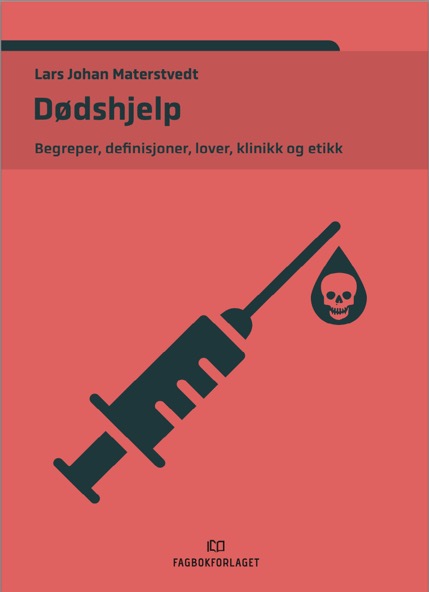
Materstvedt LJ. (2023). «Hvordan argumentere mot dødshjelp ved hjelp av de fire prinsippene for helseetikk». I: Aarseth, Svein; Østborg, Tilde Broch; Brelin, Siri; Kornmo, Tina Shagufta; Ballo, Olav Gunnar, red. Endring av etiske regler for leger kapittel I § 5 om dødshjelp? Et kunnskapsgrunnlag. Oslo: Rådet for legeetikk, Den norske legeforening, 28–30.
Bakgrunn
Jeg har blitt bedt om å utrede på hvilken måte man kan begrunne et standpunkt mot dødshjelp ved hjelp av de fire prinsippene for helseetikk. Her følger min kortfattede analyse.
De fire prinsippene
Pinsippene utlegges slik av en av deres to opphavsmenn, Tom Beauchamp:[1]
1. Beneficence—obligations to provide benefits and to balance benefits against risks.
2. Non-maleficence—the obligation to avoid causing harm.
3. Respect for autonomy—the obligation to respect the decision making capacities of autonomous persons.
4. Justice—obligations of fairness in the distribution of benefits and risks.
Prinsippene er prima facie, hvilket vil si at de alle i utgangspunktet skal oppfylles eller etterleves.
Dødshjelp
Med "dødshjelp" forstår jeg, i tråd med internasjonal teori og praksis på området, følgende:[2]
EUTANASI
En leges eller sykepleiers injeksjon av dødbringende medikamenter, på en kompetent pasients frivillige forespørsel.
ASSISTERT SELVMORD
Pasienten får utskrevet en dødelig dose medikamenter av sin lege eller av annet helsepersonell, og tar disse selv.
I forskningslitteraturen faller disse to under termen "assisted dying".[3]
(1) Velgjørenhet
Dreier seg altså om "obligations to provide benefits". Det gir imidlertid lite mening å betrakte døden som et gode (benefit); fremprovosert død kan ikke sies å være noe pasienten "nyter godt av" all den tid den døde neppe har noen erfaringer. Dødshjelp synes dermed å være i strid med (1). Noe som også understrekes av at velgjørenhet overfor pasienter angår tiltak i behandlingsøyemed, mens dødshjelp ikke er behandling.
(2) Ikke skade
Prinsippet innebærer "the obligation to avoid causing harm". Legen skal altså ikke bevisst påføre pasienter skade. Å prøve å forsvare dødshjelp i lys av (2) er implisitt å hevde at det ikke skader pasienten om legen tar livet av denne på vedkommendes forespørsel.
Dette er klart kontraintuitivt, ettersom overlagt, påført død regnes som en av de aller største skader som finnes. (Ved å sette dødelige injeksjoner stopper riktignok legen den skade sykdommen forårsaker hos pasienten; men her er altså "kuren" døden.) Sett fra perspektivet til palliativ medisin vil legen dermed også frata pasienten en potensielt meningsfull siste tid, noe som kan være skadelig for såvel pasient som pårørende. (2) kan derfor sies å utelukke dødshjelp.
(3) Respekt for autonomi
Innspillet til Landsstyret omtaler hva legene kaller "strengt regulerte kriterier". Det er f.eks. ikke uvanlig å fremføre at pasienten må være "døende" (et begrep som er både klinisk og juridisk meget upresist).[4] En "streng" regulering impliserer en innskrenkning av hvem som gis tilgang til dødshjelp. En slik praksis vil imidlertid være i strid med (3) ettersom det er ensbetydende med å krenke store pasientgruppers rett til autonomi/selvbestemmelse, og er derfor både illiberal og paternalistisk. (3) krever at man respekterer "the decision making capacities of autonomous persons", noe som nødvendigvis vil inkludere alle pasienter som kvalifiserer som autonome i denne forstand. Sykdoms- eller skadetype er følgelig irrelevant, og dersom "strengt regulerte kriterier" eksempelvis medfører at kronikere, permanent skadde, og psykiatriske pasienter ekskluderes, er bruddet med (3) eklatant.
Et godt eksempel på en lov som ikke bryter med (3) er den nederlandske dødshjelploven, som ikke diskriminerer ihht. sykdomstype eller antatt gjenstående levetid, i det den regulerer dødshjelp på basis av den vide termen medisinsk "lidelse" (suffering).[5]
Det kan også bemerkes at (3) som argument for legalisering er ugyldig dersom man legger til grunn den autonomioppfatning man finner hos Immanuel Kant (1724–1804), en av de viktigste filosofene hva gjelder fundamentet for våre vestlige, liberale rettsstater (i Norge Grunnloven). I følge Kant er det å begå selvmord identisk med å bruke ens autonomi til å ødelegge den selvsamme autonomien, hvilket er selvmotsigende og irrasjonelt og derfor umoralsk.
Men hva da med behandlingsbegrensning? Eksempelvis en autonom beslutning hos en døende om å ikke motta mer antibiotika kan også medføre autonomiens "destruksjon" ved prematur død som følge av ubehandlet infeksjon. Her kommer imidlertid Kants kjente skille mellom perfekte og ikke-perfekte plikter oss "til unnsetning": I følge alle menneskers medfødte moralske fornuft har vi en perfekt plikt til å ikke ta livet av oss selv eller andre, men bare en ikke-perfekt plikt til å berge liv. Med andre ord et skille mellom å drepe og å la dø – mellom dødshjelp og behandlingsbegrensning. For en kortfattet klinisk-etisk utdypning av skillet i konteksten behandlingsbegrensning vises til kronikken "Prisen på et liv",[6] forfattet av en intensivlege, en geriater og undertegnede.
(4) Rettferdighet
Både pasient A og B lider "utålelig/uutholdelig" i en tilstand der det "ikke er utsikter til bedring" (de to hovedkriteriene i dødshjelploven i Nederland). Men B mangler, i motsetning til A, samtykkekompetanse og kan derfor ikke handle autonomt. (4) krever "fairness in the distribution of benefits". Dersom man anser dødelige injeksjoner som en "benefit" for pasienter – noe tilhengere av legalisering av dødshjelp nødvendigvis må gjøre, selv om det som nevnt vedrørende (1) ovenfor er en påfallende tvilsom oppfatning – følger at det også, i all "fairness", må åpnes for dødelige injeksjoner til pasienter som B.
En samfunnsetisk betydning er her aksept for "compassionate murder" eller "mercy killing" – kjent fra mellomkrigstidens Tyskland.[7]
Oppsummering
Både prinsipp (1) og (2) gir grunnlag for å avvise dødshjelp. Prinsipp (3) innebærer en utvidelse av dødshjelp til et meget stort spekter av pasienter, noe tilhengere av legalisering gjerne finner problematisk (trolig også forslagsstillerne; jf. deres henvisning til "strengt regulerte kriterier"), eller vil motsette seg en slik samfunnsetisk konsekvens. (Imidlertid vil de mest "ihuga" legaliseringsaktivister se dette som positivt ettersom tilbudet om dødshjelp utvides til flest mulig.) Prinsipp (4) genererer et forsvar for legalisering av medisinske mord, noe som må kunne sies å være negativt i seg selv.[8]
Noter
[1] Beauchamp TL. (2003). Methods and principles in biomedical ethics. Journal of Medical Ethics, 29, 269–274.
[2] Materstvedt LJ. (2022). Dødshjelp – begreper, definisjoner, lover, klinikk og etikk. Bergen: Fagbokforlaget, s. 29 og 30.
[3] Materstvedt LJ. (2021). Ethical issues in physician aid-in-dying. I: Cherny N, Fallon M, Kaasa S, Portenoy R, Currow D, eds. Oxford Textbook of Palliative Medicine, 6th edn. Oxford: Oxford University Press, Chapter 19.6.
[4] Materstvedt LJ, Syse A. (2006). Døendes rettsstilling. Tidsskrift for Den norske lægeforening, 126, 488–489.
[5] Nederland. (2002). Termination of Life on Request and Assisted Suicide (Review Procedures) Act.
[6] Klepstad P, Materstvedt LJ, Sletvold O. (2010). Prisen på et liv. Kronikk, Aftenposten 15.6. Se også min drøfting i Materstvedt (2022) i kap. 3, avsnittet "Kant: Drepe vs. la dø, perfekte vs. ikke-perfekte plikter".
[7] Se min diskusjon i Materstvedt (2022) i kap. 4, avsnittet "Den korte veien fra dødshjelp til medisinske mord", samt Materstvedt LJ. (2003). Palliative care on the 'slippery slope' towards euthanasia? Palliative Medicine, 17, 387–392.
[8] Materstvedt LJ, Magelssen M. (2016). Medical murder in Belgium and the Netherlands. Journal of Medical Ethics, 42, 621–624.
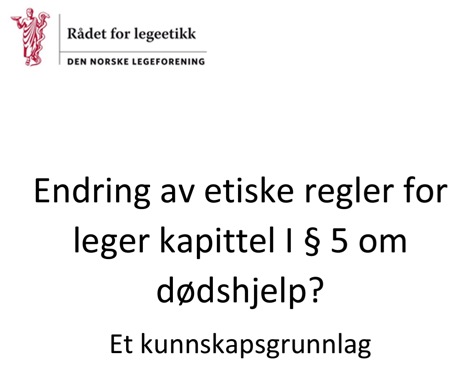
Materstvedt LJ. (2023). «En gullgruve av informasjon og argumentasjon». Bokanmeldelse av Morten Magelssen: Livet og døden. Kristne perspektiver på bioetikk. I Menneskeverd: Organ for Norsk pro vita.
– Denne boken er obligatorisk lesning for alle som er engasjert i vår tids mest presserende og komplekse bioetiske problemstillinger, skriver Lars Johan Materstvedt, professor i filosofi og medisinsk etikk ved NTNU.
Selv om den har en kristen "overbygning", er boken en gullgruve av informasjon og argumentasjon som vil være av stor verdi også for dem som ikke bekjenner seg til noen tro eller religion; humanetikere og til og med ateister har svært mye å hente her.
Magelssen viser gjennomgående at det ikke finnes en bestemt og entydig, kristen bioetikk, men at bioetiske problemstillinger kan se nokså forskjellige ut i et kristent perspektiv. Magelssen har en tydelig kristen vinkling på stoffet, og er også et par steder personlig. Dette er imidlertid ikke til forkleinelse for fremstillingen, som er uhyre saklig.
Motstemmer kommer hele tiden til orde, disse behandles strikt argumentativt og Magelssen gir disse motstemmene kreditt der han mener de har gode poeng og velbegrunnede synspunkt. Et eksempel på hans intellektuelle redelighet og raushet er at han grundig forklarer posisjonen til noen av dem han er mest uenig med på en slik måte at det blir klarere hva disse mener, og endog tar dem i forsvar mot urimelig og uredelig kritikk som har vært rettet mot dem.
Jeg må bare si at den slags dessverre er sjelden vare i en akademisk debattvirkelighet der deprimerende mange ignorerer Arne Næss’ saklighetslære.
Bokens tittel til tross, det som i hovedsak bærer fremstillingen er Magelssens utdanning i både medisin og filosofi. Han klarer å kombinere disse til tider svært forskjellige fagene på en måte som få andre makter. Det gir en rekke nye, og også uvante, perspektiver på spørsmål som i helt bokstavelig forstand dreier seg om liv og død.
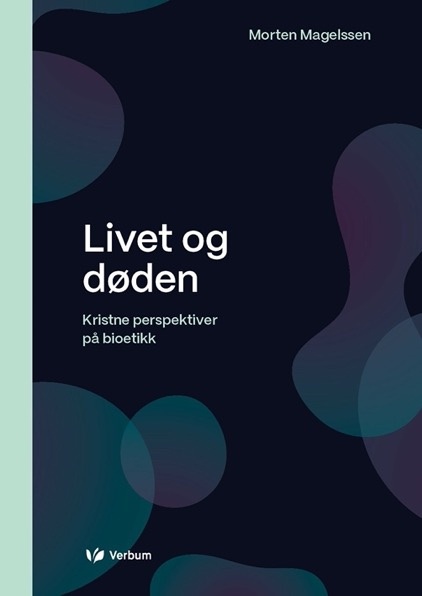
Materstvedt LJ. (2021). «Ethical issues in physician aid-in-dying». In: Cherny N, Fallon M, Kaasa S, Portenoy R, Currow D, eds. Oxford Textbook of Palliative Medicine, 6th edn. Oxford: Oxford University Press, Chapter 19.6., pages 1161–1169.
Abstract
According to international convention, physician aid-in-dying includes euthanasia and physician-assisted suicide, both of which are voluntarily requested forms of medicalized killings. In the former, a physician injects the patient with lethal drugs, whereas in the latter the patient self-administers such drugs. The two practices differ fundamentally from non-treatment decisions and from the last-resort treatment, palliative sedation and details of the differences are outlined in the chapter. Physician aid-in-dying differs considerably in appearance, depending on which normative ethical theory is taken as the point of departure and how various theories can be used either to reject or to defend physician aid-in-dying. The chapter also discusses alternative ways for palliative care physicians to relate to physician aid-in-dying.
Contents
- Introduction
- Assisted dying and physician aid-in-dying: definitions and taxonomy – Euthanasia; Physician-assisted suicide; Assisted suicide (not physician assisted)
- Practices that are often conflated with aid-in-dying – Life-ending acts without explicit patient request (LAWER); Non-voluntary medicalized killing; Involuntary medicalized killing; Non-voluntary and involuntary euthanasia; Passive euthanasia and non-treatment decisions; Palliative sedation
- Ethics overview: a fourfold division – Meta-ethics; Descriptive or empirical ethics; Normative ethics; Applied ethics
- Physician aid-in-dying and philosophical normative ethics – Ethics of duty; Libertarianism; Utilitarianism; Moral relativism; The four principles approach to healthcare ethics
- Ways palliative care physicians can relate to physician aid-in-dying – Neutrality; Rejection; Collaboration; Integration
- Concluding remarks: importance of individualism in physician aid-in-dying—and a challenging issue
- References
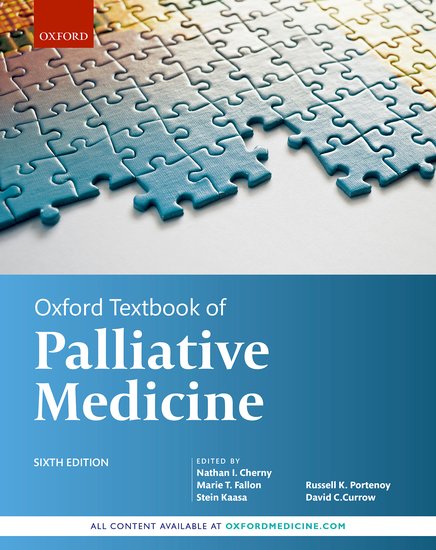
Fredheim OM, Materstvedt LJ, Skulberg IM, Magelssen M. (2021). «Ought the level of sedation to be reduced during deep palliative sedation? A clinical and ethical analysis». BMJ Supportive & Palliative Care. Online ahead of print.
Contents
- Introduction
- Terminology
- Key ethical dilemma in DPS
- Method
- Relevant values
- The patient’s perspective – Respect for autonomy and fulfilment of beneficence; Non-maleficence
- Next of kin’s perspective
- Healthcare professional’s perspective
- Society’s perspective
- Clinical-ethical and philosophical arguments
- Discussion
- Conclusion
- References

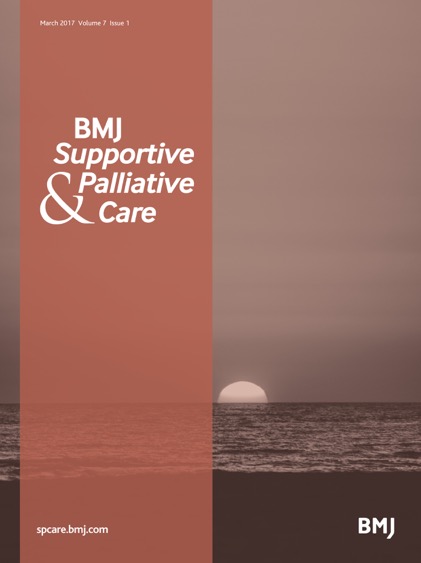
Gerson SM, Koksvik G, Richards N, Materstvedt LJ, Clark D. (2021). «Assisted dying and palliative care in three jurisdictions: Flanders, Oregon, and Québec». Annals of Palliative Medicine; 10: 3528–3539.

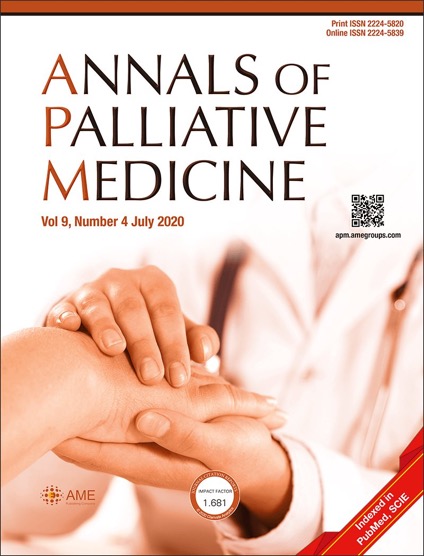
Materstvedt LJ. (2020). «Distinction between euthanasia and palliative sedation is clear-cut». Journal of Medical Ethics; 46: 55–56.
Abstract
This article is a response to Thomas David Riisfeldt’s paper entitled ’Weakening the ethical distinction between euthanasia, palliative opioid use and palliative sedation’. It is shown that as far as euthanasia and palliative sedation are concerned, Riisfeldt has not established that a common ground, or a similarity, between the two is the relief of suffering. Quite the contrary, this is not characteristic of euthanasia, neither by definition nor from a clinical point of view. Hence, the argument hinges on a conceptually and empirically erroneous premise and is accordingly a non-starter.
Contents
- What is euthanasia?
- What is palliative sedation?
- A fundamentally flawed empirical premise
- Conclusion: no weakening of the distinction
- References
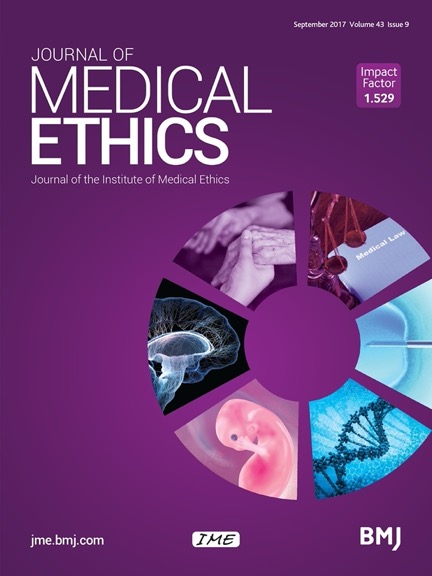
Materstvedt LJ. (2020). «Confusion and misinformation about assisted dying. Even at The Lancet». University of Glasgow, Scotland, End of life studies blog, March 25th.
Contents
- What is 'assisted dying'?
- Confusion and misinformation about assisted dying is widespread
- World report of The Lancet
- The Netherlands
- Victoria, Australia, Canada and Belgium
- Inadequate corrections made by The Lancet

Koksvik G, Richards N, Gerson SM, Materstvedt LJ, Clark D. (2020). «Medicalisation, suffering and control at the end of life: The interplay of deep continuous palliative sedation and assisted dying». Health: An Interdisciplinary Journal for the Social Study of Health, Illness and Medicine. Online ahead of print.

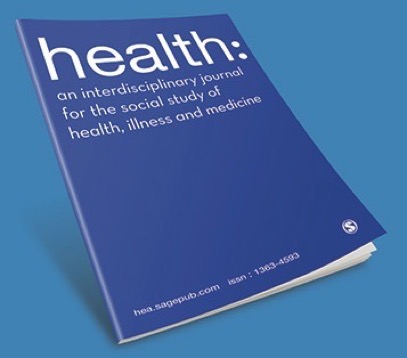
Gerson SM, Koksvik G, Richards N, Materstvedt LJ, Clark D. (2020). «The relationship of palliative care with assisted dying where assisted dying is lawful: A systematic scoping review of the literature». Journal of Pain and Symptom Management; 59: 1287–1303.el

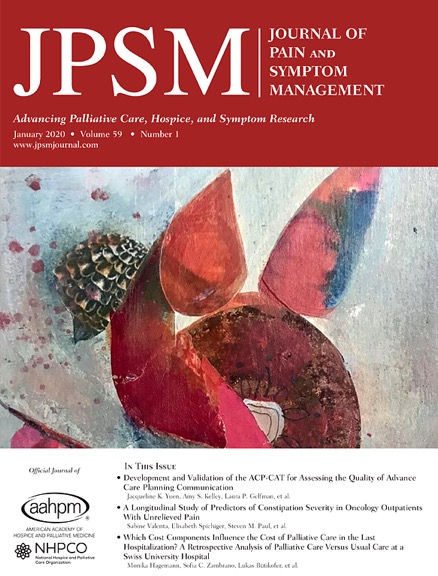
Materstvedt LJ. (2019). «Selvbestemmelsesretten – en hellig ku i det sekulære Vesten» [The right to self-determination – a sacred cow in the secular West]. Nytt Norsk Tidsskrift; 36: 230–240.
Abstract
The right to self-determination is frequently invoked within the Western cultural hemisphere, and regularly done so with force in public exchanges – for example, in the current debate on the legalisation of euthanasia and in connection with suggested changes to the law regulating abortion. Both issues are marked by a rhetoric containing expressions such as ‘My life, my death’ and ‘Women’s right to be in control of their bodies’. Such claims apparently carry so much force in and of themselves that arguing against them would seem a futile undertaking. And, we may ask, what sort of liberal would deny a person the right to be in charge of his or her own life? Still, matters are not that simple. The present article demonstrates that the self-determination rhetoric is premised on a particular, empirically dubious presupposition: that each person is the best judge of that person’s interests. Nonetheless, this is something that must be presumed in liberal society.
Innhold
- Individualismens fremmarsj: Dødshjelp som eksempel
- Ekstrem selvbestemmelse: Nozicks libertarianisme
- Forestillingen om at vi eier oss selv
- Paternalisme og retten til å selge seg som slave
- Retten til å bli drept
- Organdonasjon og salg av organer
- Abortdebatten og selvbestemmelsesargumentet
- Juss og moral
- Om å vite sitt eget beste
- Konklusjon
- Referanser
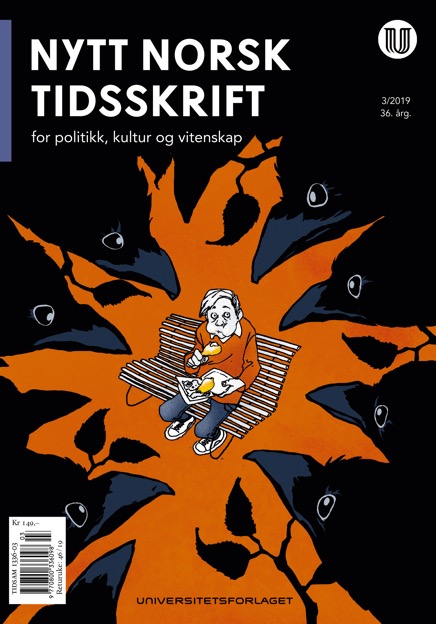
Materstvedt LJ, Ottesen S, von Hofacker S, Syse A. (2019). «Lindrende sedering: Unødvendig lidelse kan unngås ved livets slutt». Dagens Medisin, 29.1.

Materstvedt LJ. (2018). Vitenskap, etikk og politikk [Science, ethics and politics]. Bergen: Fagbokforlaget.
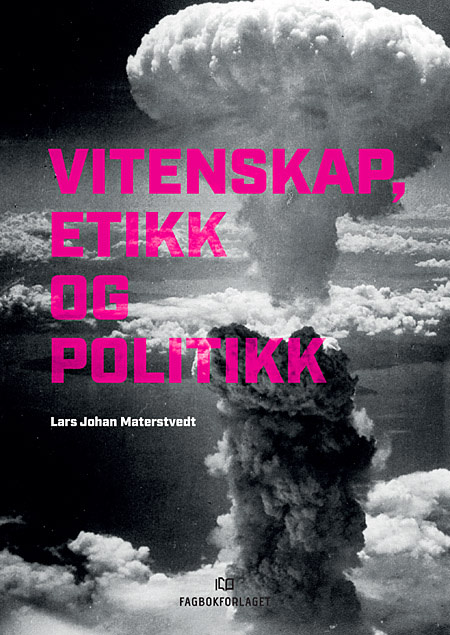 -
-
Materstvedt LJ. (2018). «'Assisted dying' – what it is, where it's practised, and what the future might hold». Discover Society, by Social Research Publications; Category DS53. February 6.


Heidenreich K, Bremer A, Materstvedt LJ, Tidefelt U, Svantesson M. (2018). «Relational autonomy in the care of the vulnerable: health care professionals' reasoning in Moral Case Deliberation (MCD)». Medicine, Health Care and Philosophy; 21: 467–477.


Materstvedt LJ, Magelssen M. (2018). «Missvisande och felaktigt från Smer». Brev til redaktøren. [Publisert i kommentarfeltet til lenket artikkel.] Läkartidningen, 21.6.
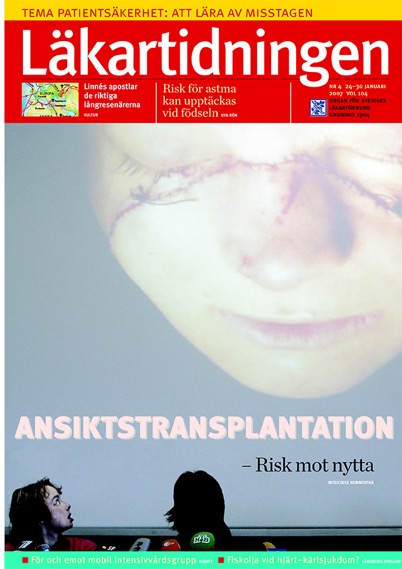
Materstvedt LJ. (2018). «Euthanasia is never ‘passive’. Inappropriate definitions may make moral problems more complicated». Proceedings of the XXIII World Congress of Philosophy; 20: 15–21.
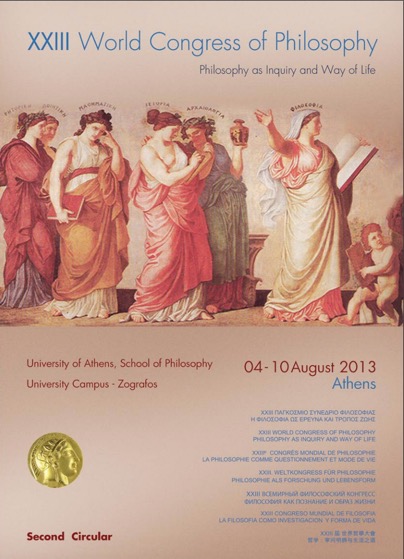
Materstvedt LJ. (2017). «Den medisinske selvmorderen i individualismens tid» [Medical suicide in the age of individualism]. Suicidologi; 1: 4–11.
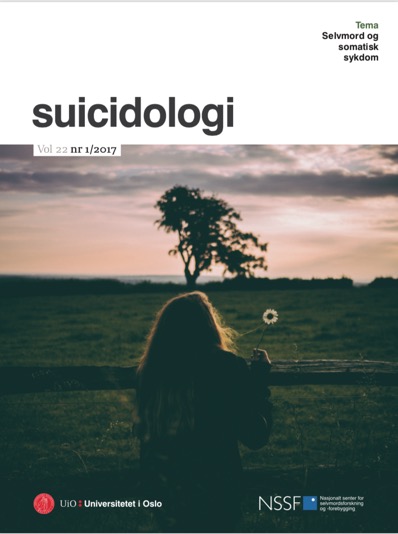
Materstvedt LJ, Magelssen M. (2016). «Medical murder in Belgium and the Netherlands». Journal of Medical Ethics; 42: 621–624.
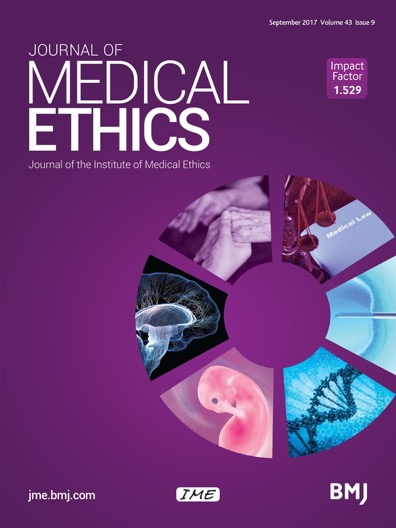
Materstvedt LJ. (2016). «The Norwegian Medical Association's lack of clarity on 'active help in dying'». Journal of the Norwegian Medical Association; 136: 1248–1250.

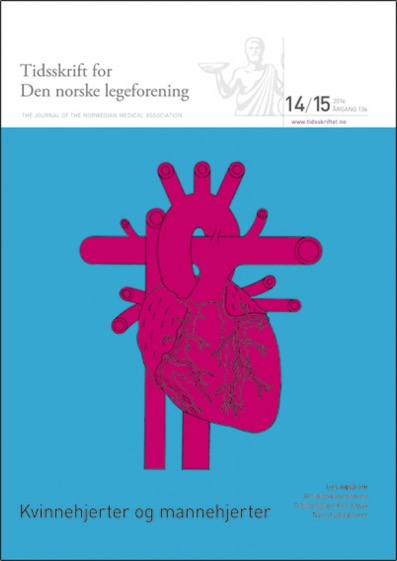
Materstvedt LJ. (2016). «Legeforeningens uklarhet om 'aktiv dødshjelp'». Tidsskrift for Den norske legeforening; 136: 1248–1250.
Balaguer A, Monforte-Royo C, Porta-Sales J, Alonso-Babarro A, Altisent R, Aradilla-Herrero A, Bellido-Pérez M, Breitbart W, Centeno C, Cuervo MA, Deliens L, Frerich G, Gastmans C, Lichtenfeld S, Limonero JT, Maier MA, Materstvedt LJ, Nabal M, Rodin G, Rosenfeld B, Schroepfer T, Tomás-Sábado J, Trelis J, Villavicencio-Chávez C, Voltz R. (2016). «An international consensus definition of the wish to hasten death and its related factors». PLOS ONE 11(1): e0146184.

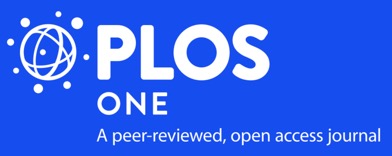
Magelssen M, Supphellen M, Nortvedt P, Materstvedt LJ. (2016). «Attitudes towards assisted dying are influenced by question wording and order: a survey experiment». BMC Medical Ethics; 17: 24.


Materstvedt LJ, Kaasa S. (2016). «Palliasjon og eutanasi» [Palliative care and euthanasia]. Kap. 5 i Kaasa S, Loge JH, red. Palliasjon. Nordisk lærebok [Palliation. Nordic Textbook]. 3. utgave. Oslo: Gyldendal Akademisk, s. 83–96.
(Les anmeldelse av boken i Tidsskrift for Den norske legeforening.)
Innledning
Et kontroversielt tema innen palliasjon er forholdet mellom palliasjon og eutanasi. Det er også meget aktuelt, av minst tre grunner. For det første har man i nyere tid flere steder legalisert eutanasi og/eller assistert selvmord. Eksempelvis ble begge deler lovlig i Canada fra og med juni 2016 (se faktaboks 5.3). Dette gjør det maktpåliggende for helsearbeidere innen palliasjon å ha et avklart forhold til fenomenene – rimeligvis der praksisene er tillatt, men også steder de er forbudt, men kan bli lov. I England, hospicebevegelsens hjemland, kan det i nær fremtid bli vedtatt en lov som tillater legeassistert selvmord (en handling som ligger nær opp til eutanasi; se faktaboks 5.1). The Association for Palliative Medicine of Great Britain and Ireland er sterkt imot at leger i så fall skal delta i praksisen. For det andre er kreftpasienter den desidert største pasientgruppen innen palliasjon, samtidig som hele 83,1% av dem som døde som følge av eutanasi i Nederland i 2010 var kreftpasienter. For det tredje praktiseres eutanasi på en del palliative avdelinger i Belgia, noe som enkelte ser som en modell til etterfølgelse, mens den for andre er et skrekkeksempel på hva som må unngås om eutanasi skulle bli legalisert (se faktaboks 5.4). Dessuten tillot Belgia i 2014 eutanasi for terminalt syke barn, uten noen nedre aldersgrense. Dermed er temaet også blitt aktuelt for helsearbeidere innen pediatri. Tradisjonelt har eutanasi og palliasjon blitt oppfattet som rake motsetninger, like uforenlige som ild og vann. Grunnleggeren av hospicebevegelsen, legen Dame Cicely Saunders (1918-2005), hevdet tidlig at eutanasi både er moralsk galt og klinisk unødvendig dersom terminalt syke kreftpasienter gis kompetent behandling og pleie. Før det er mulig å danne seg en oppfatning av dette komplekse temaet, må vi imidlertid starte med begrepsavklaringer.
Innhold
- Innledning
- Eutanasi og legeassistert selvmord – «assistert død»
- Sykepleieres rolle
- Behandlingsbegrensning
- Medisinske mord (LAWER) og legitime drap
- Kriterier for eutanasi og legeassistert selvmord
- Assistert død og psyko-sosiale faktorer
- Norske kreftpasienter om eutanasi
- Faktorer som hemmer pasienters selvbestemmelse
- Eutanasi i en palliativ kontekst
- Avsluttende merknader
- Anbefalt litteratur

Materstvedt LJ. (2016). «Dødshjelp er aldri 'aktiv' eller 'passiv'». [Euthanasia is never 'active' or 'passive']. I: Førde R, Kjelland M, Stridbeck U, red. Cand.mag., cand.med., cand.jur., cand.alt – Festskrift til Aslak Syse 70 år. Oslo: Gyldendal Juridisk, s. 345–355.
Bakgrunn
Et av de mange tema som opptar Aslak, er det kontroversielle og komplekse «aktiv dødshjelp» – senest i et kapittel i en ny lærebok i helserett. I temaet «møtes» legen og juristen Aslak. Dette doble inntaket gjør ham til en sjelden fugl blant debattantene. Og sjeldne fugler er verdsatte.
Innhold
- Begrepet «aktiv dødshjelp»
- Eutanasi og legeassistert selvmord
- «Passiv» dødshjelp
- Medieundersøkelsen 2015 om «aktiv dødshjelp»
- Den norske legeforening om «aktiv dødshjelp»
- Bør eutanasi-begrepet også vrakes? Om orwelliansk nytale
- Et forslag til (enkel) terminologi
- Sluttord: Står legenes drapsmonopol for fall? Vil filosofer overta?
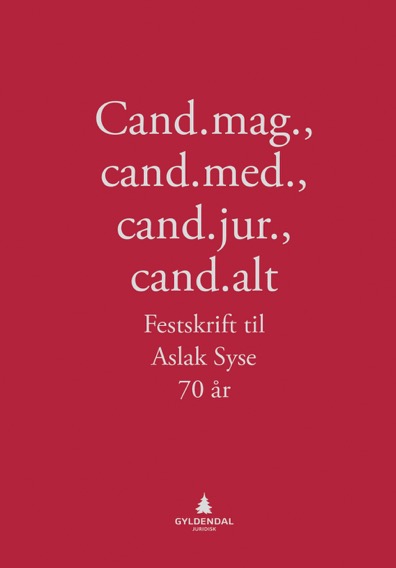
Materstvedt LJ. (2016). «Are there any (absolute) political obligations?». In: Kjartan Koch Mikalsen, Erling Skjei, Audun Øfsti, eds. Modernity. Unity in Diversity? Essays in Honour of Helge Høibraaten. Oslo: Novus Press, pages 195–216.
Introduction
Helge’s interests in philosophy range wide; indeed, one sometimes wonders, what is he not interested in? Furthermore, whatever the subject, for reasons unbeknownst even to those of us who have known him for many years, he always manages to deal with it in ways that are interesting, original, illuminating and, not least, witty – to our ongoing fascination. Nonetheless, it would be fair to say that political philosophy has always occupied a special place for Helge. This chapter addresses certain basic issues within that branch of philosophy. These include whether there is such a thing as political obligation and, if so, what sort of obligation it is; the anarchist’s challenge to the idea of state legitimacy; and the issue of consent to a state, be it explicit or implicit (tacit). In the first part, I point out certain problems with the idea of state legitimacy.
Contents
- The belief in state authority
- «Why not have anarchy?»
- The concept of political obligation
- What is a state?
- The issue of state legitimacy
- Consent theory’s answer: Locke’s notion of (limited) explicit consent
- Non-consenters
- The idea of «tacit consent» – and Hume’s and Nozick’s criticisms
- Rawls: the principle of fairness and political obligations
- Political obligations within the Nozickean minimal state
- «Why not have anarchy?»: Kant’s reply
- The dogma of absolute sovereignty and absolute political obligations
- The inner-morality constraint: limiting the scope of political obligations?
- Is Kant contradicting himself?
- About duties of virtue and duties of justice
- On the political obligation to uphold a tyranny – and on being sentenced to death for resisting it
- Concluding remarks
- References
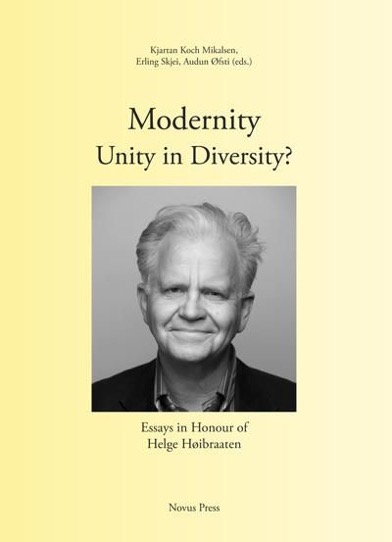
Materstvedt LJ. (2016). «The EAPC on euthanasia, 2003 and 2016». University of Glasgow, Scotland, End of life studies blog, April 5th.
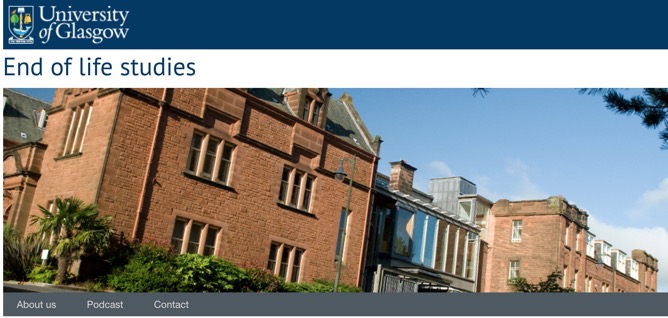
Materstvedt LJ, Førde R. (2016). «'Dødshjelp': definisjoner, kliniske skillelinjer, og utviklingen internasjonalt 2011-2016». [‘Help in dying’: definitions, clinical distinctions, and international developments 2011-2016]. Omsorg. Nordisk tidsskrift for palliativ medisin; 2: 9–13.
Materstvedt LJ, Bosshard G. (2015). «Euthanasia and palliative care». In: Cherny N, Fallon M, Kaasa S, Portenoy R, Currow D, eds. Oxford Textbook of Palliative Medicine, 5th edn. Oxford: Oxford University Press, Chapter 5.7, pages 314–322.
Abstract
This chapter focusses on the particular relationship and interconnections between euthanasia and palliative care. The opening definition of euthanasia is followed by explanations of what is entailed by physician-assisted suicide and assisted suicide. All three categories are based on patient request, and on using drugs to intentionally induce death; they can be subsumed under the term «assisted dying». Selected key data on these practices are presented. Of central importance is the question of how requests for assisted dying should be handled within palliative care, and as part of addressing this question the chapter includes a discussion of the practice in Belgium, where euthanasia is performed within palliative care institutions. Our in-depth exploration of the requirements to be met in cases of assisted dying where such practices have been legalized demonstrates that certain crucial criteria are notoriously unclear and open to interpretation. Furthermore, we present the Swiss model, which practices a much clearer separation between assisted dying and both palliative care and clinical medical practice. Statements on assisted dying made by key palliative care organizations are then presented and analyzed. We ask whether palliative care is at risk of «sliding down a slippery slope towards euthanasia»; that is, whether the palliative care community will be more accepting of euthanasia in the future, following potential new legislation. Our concluding remarks consider the current reluctance of doctors to participate in assisted dying, and the pressures they are under – from the general public as well as legislative bodies – to accept a role in present and future practices of assisted dying.
Contents
- DEFINITION OF «EUTHANASIA» – Physician-assisted suicide (PAS) – Assisted suicide
- MEDICALIZED KILLING WITHOUT REQUEST (LAWER) – Non-voluntary medicalized killing – Involuntary medicalized killing
- ASSISTED DYING IN PRACTICE – Frequency – Age groups – Cancer predominant – Relevance for palliative care – Why patients request assisted death – What is a «request»?
- HOW SHOULD PALLIATIVE CARE DEAL WITH REQUESTS FOR ASSISTED DYING? – The negative approach – The World Health Organization (WHO) stance
- BELGIUM: OFFERING EUTHANASIA IN A PALLIATIVE CARE SETTING – «Palliative care and euthanasia are neither alternatives nor opposites» – Suffering that «cannot be alleviated» – Refractory symptoms – Scope of suffering – No «reasonable» alternative to euthanasia
- «MEDICAL FUTILITY» AND THE LEGAL REQUIREMENTS OF ASSISTED DYING – Concept of futility – Criterion of medically «futile» or «hopeless» condition – «No prospect of improvement» – «Unbearable» suffering – No requirement of limited life expectancy – Requirement of «terminal» illness – PAS vs. euthanasia – The idea of «palliative futility»
- A BASIC CHALLENGE FOR PALLIATIVE CARE, AND THE MODEL OF «INTEGRAL» PALLIATIVE CARE
- THE SWISS MODEL OF ASSISTED SUICIDE – Role of the doctor – Role of right-to-die organizations – «Suicide tourism» – De-medicalizing assisted suicide
- STATEMENTS ON ASSISTED DYING BY SOME PALLIATIVE CARE ORGANIZATIONS – European Association for Palliative Care (EAPC) – The Australian and New Zealand Society of Palliative Medicine (ANZSPM) – The International Association for Hospice & Palliative Care (IAHPC) – The Canadian Hospice Palliative Care Association (CHPCA) – Canadian Society of Palliative Care Physicians (CSPCP) – The American Academy of Hospice and Palliative Medicine (AAHPM)
- THE FUTURE: PALLIATIVE CARE ON THE «SLIPPERY SLOPE» TOWARDS EUTHANASIA? – Impact of new legislation
- CONCLUDING REMARKS – Doctors’ reluctance to participate in assisted dying – Doctors caught in the middle – From caring to killing?
- REFERENCES

![]()
Materstvedt LJ. (2015). «Caring and killing in the clinic: the argument of self-determination». In: Rehmann-Sutter C, Gudat H, Ohnsorge K, eds. The Patient’s Wish to Die. Research, Ethics, and Palliative Care. Oxford: Oxford University Press, Part III, Ethics, Chapter 12, pages 125–138.
Abstract
This chapter looks at the issue of assisted dying – that is, euthanasia, physician-assisted suicide and assisted suicide – through the lens of the right to autonomy or self-determination. A key thinker in this connection is Immanuel Kant. It is shown how, within Kant’s philosophical system, assisted dying emerges as morally objectionable. From a legal point of view, however, it is not clear that assisted dying should be prohibited. On this author’s reading of Kant, his view of individual freedom taken together with his division of moral and legal duties, opens up the possibility of legalized assisted dying. Still, this should be based on the premise that such legislation is not a threat to the rights of other individuals. The chapter also discusses the concept of self-ownership in John Locke and Robert Nozick, and connects it with the issue of assisted dying. Further, it is shown that the idea that people are «the best judges of their own interests», which is central to the assisted dying debate, is problematic in principle as well as in practice. In the context of palliative end-of-life care, it is even more problematic, due to all the factors that may impact on the decision-making capacities of patients. The chapter ends with some reflections on inappropriate terminology sometimes used in connection with assisted dying, and calls for plain language to describe this extraordinarily complex issue.
Contents
- Palliative care versus assisted dying
- Autonomy as self-determination
- Kant on suicide – and on physician-assisted suicide and euthanasia
- A duty to stay alive?
- On morality and legality
- Kant on assisted dying: is it legally acceptable?
- J.S. Mill on assisted dying: is it morally acceptable?
- Self-ownership and assisted dying: Locke and Nozick
- Are people really «the best judges of their own interest»?
- Self-determination in practice: how wishes to die tend to fluctuate
- Concluding remarks
- References
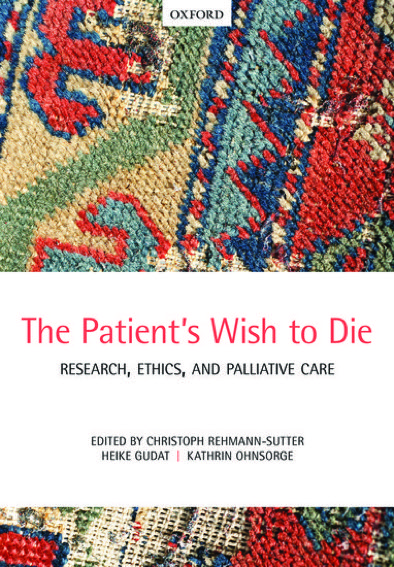
Materstvedt LJ. (2015). «Misconstrual of EAPC’s position paper on euthanasia». Journal of Medical Ethics; 41: 655–656.
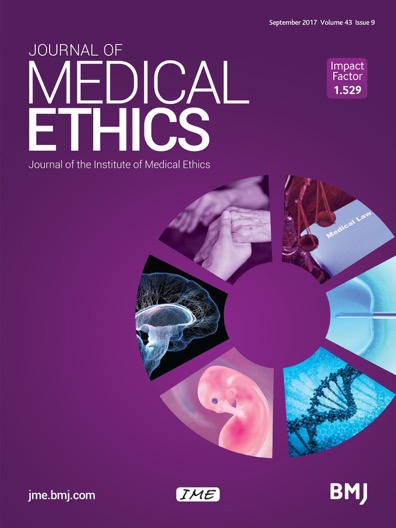
Førde R, Materstvedt LJ, Markestad T, Kongsgaard UE, von Hofacker S, Brelin S, Ore S, Laudal M. (2015). «Palliative sedation at the end of life – revised guidelines». Journal of the Norwegian Medical Association; 135: 220–221.
Download the guidelines here.


Førde R, Materstvedt LJ, Markestad T, Kongsgaard UE, von Hofacker S, Brelin S, Ore S, Laudal M. (2015). «Lindrende sedering i livets sluttfase – reviderte retningslinjer». Tidsskrift for Den norske legeforening; 135: 220–221.
Materstvedt LJ. (2015). «Å stirre døden i hvitøyet». [Stearing death in the eye]. Tidsskrift for Den norske legeforening; 135: 565–566.
Materstvedt LJ. (2014). «Palliative care and euthanasia: what is the view of the EAPC?». Editorial. BMJ Supportive & Palliative Care; 4: 124–125.
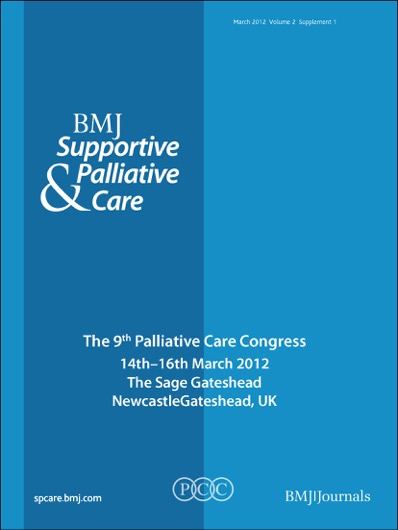
Materstvedt LJ, Magelssen M. (2014). «Liberalisering av fosterdiagnostikk?» Nytt Norsk Tidsskrift; 1: 106–108.
Innhold
- Offentlig og privat sortering av fostre
- Et problem for likeverdsargumentet?
- En «motsatt» løsning
- Abort på grunn av legning, kjønn og handicap
- Et liberalt paradoks
- Litteratur
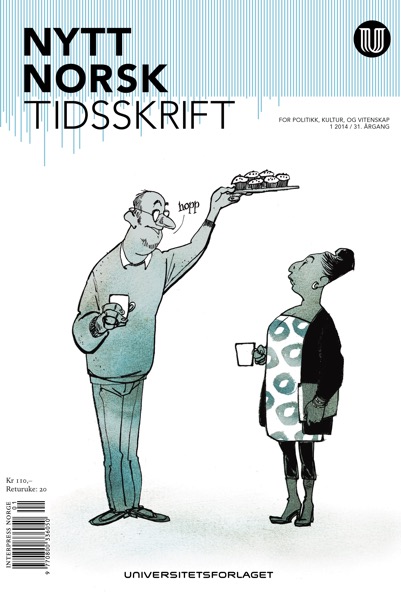
Materstvedt LJ. (2013). «Erroneous assumptions about deep palliative sedation and euthanasia». BMJ Supportive & Palliative Care; 3: 458–459.
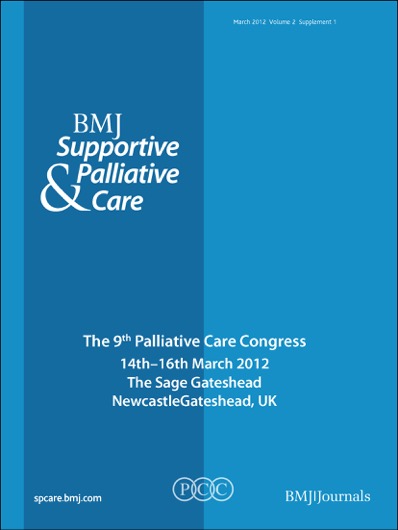
Materstvedt LJ. (2013). «Palliative care ethics: the problems of combining palliation and assisted dying». Progress in Palliative Care; 3: 158–164.
Abstract
The performing of euthanasia is now offered as an option by certain palliative care service institutions in Belgium. The approach is known as the «integral» model. Although it is understandable that some physicians are in favour of it, the model is rejected in this article, for both clinical and ethical reasons. Furthermore, the idea of «palliative futility» associated with the model is shown to be incoherent. In countries where assisted dying is legal, palliative care providers should refrain from participating in such practices if they are to remain true to the basic values of such care. The widespread conception that withholding and withdrawing treatment amounts to a «hastening» of death is also rejected.
Contents
- PC and non-treatment decisions
- NTDs do not «hasten» death
- NTDs and killing by omission
- Forms of «assisted dying»
- Idea that euthanasia may be «part of» PC
- Why do patients request assisted dying?
- Some arguments for and against the Belgian model
- Legalization, institutionalization and normalization
- A duty to die?
- Concept of «palliative futility»
- Concerns about effects of legalized assisted dying
- Conclusion
- References
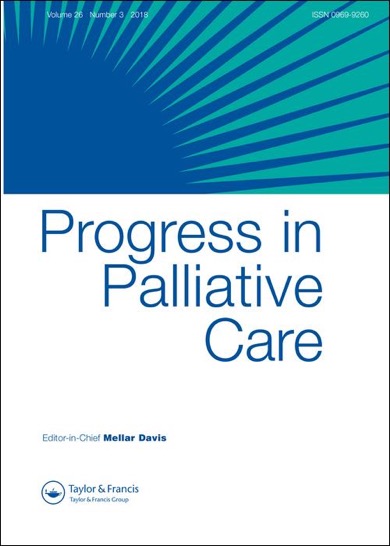
Nordstrand MA, Nordstrand SJ, Materstvedt LJ, Nortvedt P, Magelssen M. (2013). «Medisinstudenters holdinger til legalisering av eutanasi og legeassistert selvmord» [Medical students' attitudes towards legalization of euthanasia and physician-assisted suicide]. Tidsskrift for Den norske legeforening [Journal of the Norwegian Medical Association]; 133: 2259–2263.
Materstvedt LJ. (2013). «Psykologiske, sosiale og eksistensielle aspekter ved ‘aktiv dødshjelp’» Psykologisk Tidsskrift; 3: 28–34.
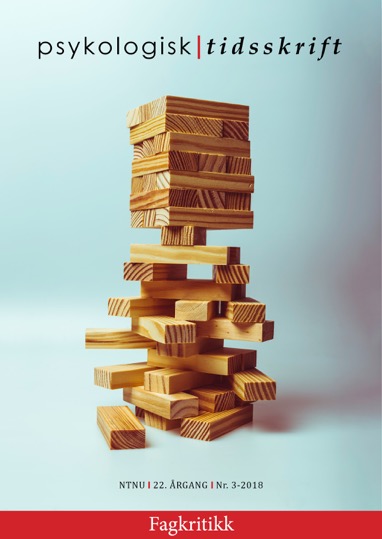
Magelssen M, Materstvedt LJ. (2013). «Å granske hjerter og nyrer: ultralydens etikk». Nytt Norsk Tidsskrift; 1: 28–40.
Sammendrag
Arbeiderpartiet og Sosialistisk Venstreparti har foreslått tilbud om en ekstra ultralydundersøkelse, «tidlig ultralyd», for alle gravide i uke 11–13. Vi stiller oss kritisk til dette dersom formålet er fosterdiagnostikk. For fosterdiagnostikk kan lede til selektiv abort, en praksis som ikke er forenlig med prinsippet om menneskers likeverd.
Innhold
- Debatten: omfattende, men likevel mangelfull
- Immanuel Kant om menneskets verdighet og ukrenkelighet
- Selektiv abort og «likeverdsargumentet»
- Samfunnet som moralsk aktør
- Likeverdsargumentets relevans og rekkevidde
- Betydningen av fosterets moralske status
- Selvbestemt og selektiv abort, likeverdsargumentet og fosterets moralske status
- Tidlig ultralyd som fosterdiagnostikk
- Tidlig ultralyd, helsegevinst, og doktrinen om den doble effekt (DDE)
- Sekundære formål ved tidlig ultralyd
- Andre mulige begrunnelser for tidlig ultralyd
- Konklusjon
- Litteratur
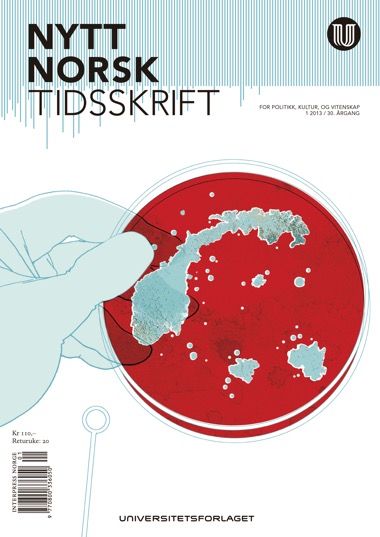
Materstvedt LJ. (2012). «Intention, procedure, outcome and personhood in palliative sedation and euthanasia». BMJ Supportive & Palliative Care; 2: 9–11.
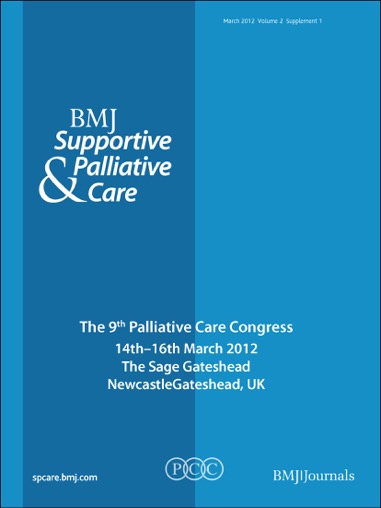
Fredheim OM, Materstvedt LJ. (2012). «Behandlingsbegrensning på operasjonsstuen?» [Withholding treatment in the operating room?] Tidsskrift for Den norske legeforening [Journal of the Norwegian Medical Association]; 132: 1361–1363.
Sammendrag
Når man under en akutt operasjon innser at pasienten ikke kan kureres og har svært kort forventet levetid, reises viktige spørsmål om avslutning av behandling. Vi drøfter her kliniske og etiske aspekter ved en slik situasjon, særlig om det bør være et mål at pasienten får anledning til å gjenvinne bevisstheten.
Innhold
- Den kliniske situasjonen
- Kliniske handlingsalternativer
- Vurderinger i lys av den nasjonale veilederen
- Etiske betraktninger
- Argumenter mot vekking
- «Ikke vekke» i lys av etisk teori
- Argumenter for å vekke
- Konklusjon
- Litteratur
Bosshard G, Materstvedt LJ. (2011). «Medical and societal issues in euthanasia and assisted suicide». Chap. 17 in: Chadwick R, ten Have H, Meslin EM, eds. The SAGE Handbook of Health Care Ethics: Core and Emerging Issues. London: SAGE Publications Ltd., pages 205–221.
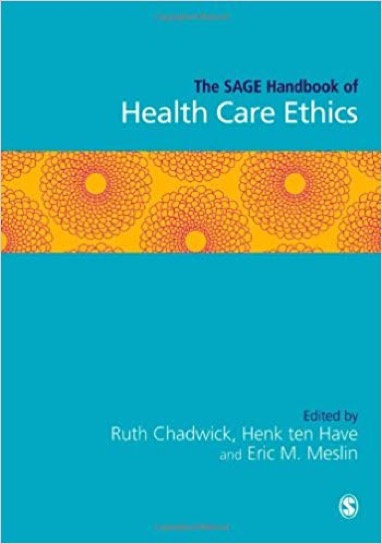
Materstvedt LJ, Førde R. (2011). «Fra aktiv og passiv dødshjelp til eutanasi og behandlingsbegrensning». Tidsskrift for Den norske legeforening [Journal of the Norwegian Medical Association]; 131: 2138–2140.
Materstvedt LJ. (2011). «What is this thing called medical ethics? A Kantian interpretation». In: Carson SG, Knowles J, Myskja BK, eds. Kant: Here, Now, and How. Essays in Honour of Truls Wyller. Paderborn: mentis Verlag GmbH, pages 207–233.
Contents
- Ethics: a division
- On the relationship between metaethics and normative ethics
- A note on descriptive ethics
- The four principles approach to health care ethics
- Beneficence – «do good»
- Non-maleficence – «do not harm»
- Truth-telling, harming and disrespect for autonomy
- Autonomy: ethical and empirical
- On paternalism
- Justice: one concept, many definitions
- The principles in conflict – some examples
- Philosophical medical ethics (PME)
- Why do PME?
- Concluding remark
- References

Materstvedt LJ, Bosshard G. (2010). «Euthanasia and physician-assisted suicide». In: Hanks G, Cherny N, Christakis N, Fallon MT, Kaasa S, Portenoy RK, eds. Oxford Textbook of Palliative Medicine, 4th edn. Oxford: Oxford University Press, chap. 5.5, pages 304–319.

Materstvedt LJ, Bosshard G. (2009). «Deep and continuous palliative sedation (terminal sedation): clinical-ethical and philosophical aspects». The Lancet Oncology; 10: 622–627.
Summary
Terminal sedation continues to fuel debate. When confronted with a patient for whom terminal sedation is considered a possible treatment option, decision making can be difficult. In this paper we focus on the clinical-ethical issues, with an aim to provide clinicians with ways of framing the issue from an ethical point of view. In addition to the clinical-ethical issues, terminal sedation touches upon interesting and complex questions of an essentially philosophical nature. What it means to be a «person» is one such question, and is a topic that is relevant to clinical, daily practice. Accordingly, in the latter part of this paper we draw briefly on selected philosophical positions to elucidate this question. A doctor's belief of what it means to be a «person» might well affect their actions. For example, if a doctor believes terminal sedation involves the destruction of the person, they might not be willing to proceed with it.
Contents
- Introduction
- Terminal sedation, palliative sedation, and palliative sedation therapy
- Deep and continuous palliative sedation
- Quality of life
- Autonomy
- Hastening of death and shortening of life
- Euthanasia
- Terminal sedation
- Personhood
- Psychological and existential suffering
- Conclusion
- References
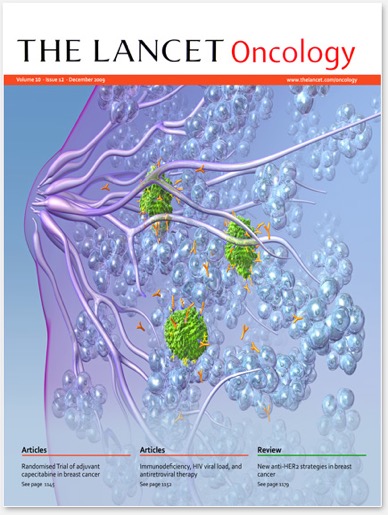
Materstvedt LJ. (2009). «Inappropriate conclusions in research on assisted dying». Journal of Medical Ethics; 35: 272.
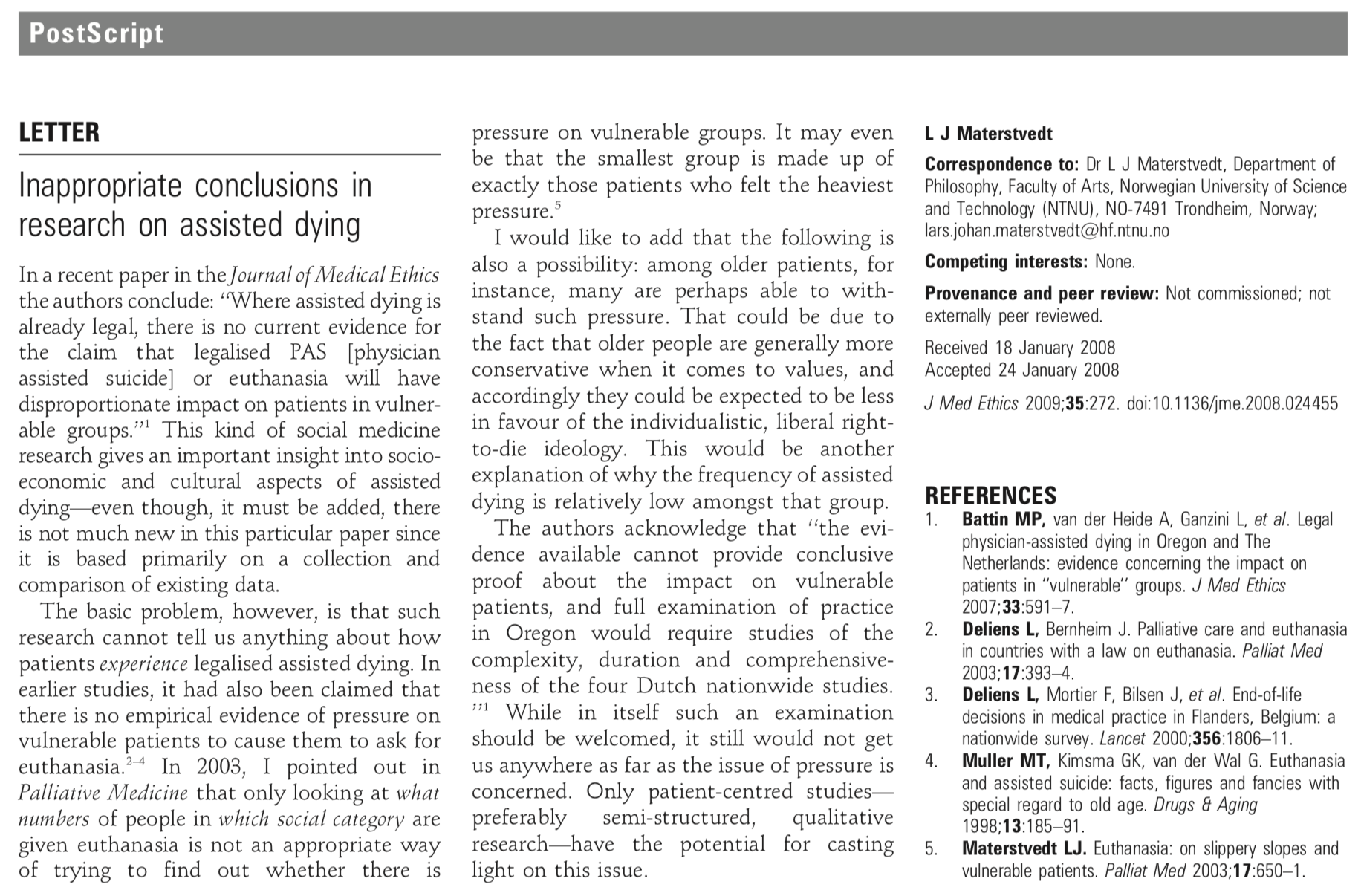
Materstvedt LJ, Førde R. (2009). «Retningslinjene for lindrende sedering bør revideres» [The guidelines on palliative sedation should be revised]. Tidsskrift for Den norske legeforening [Journal of the Norwegian Medical Association]; 129: 426–428.
Bosshard G, Materstvedt LJ. (2009). «Terminale Sedierung: klinisch-ethische und philosophische Aspekte». palliative–ch. Zeitschrift der Schweizerische Gesellschaft für Palliative Medizin, Pflege und Begleitung; 3: 31–33. [Including summaries in French and Italian on pages 34 and 35; «La sédation terminale: aspects cliniques, éthiques et philosophiques» and «La sedazione terminale: aspetti clinici, etici e filosofici».]
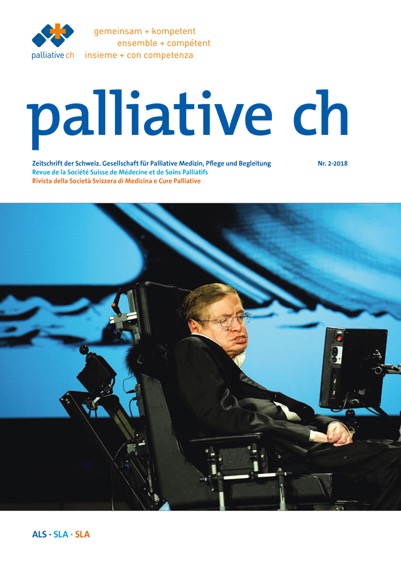
Materstvedt LJ. (2009). «Lindrende sedering i etisk og filosofisk lys». Tidsskrift for Den norske legeforening [Journal of the Norwegian Medical Association]; 129: 1314.
Materstvedt LJ, Førde R. (2009). «Flere feil om eutanasi» [Further misconceptions about euthanasia]. Tidsskrift for Den norske legeforening [Journal of the Norwegian Medical Association]; 129: 649.
Materstvedt LJ, Førde R. (2009). «Feil om eutanasi» [Incorrect about euthanasia]. Tidsskrift for Den norske legeforening [Journal of the Norwegian Medical Association]; 129: 121.
Materstvedt LJ. (2009). «Nederlandske legers motiver for lindrende sedering» [Dutch physicians’ motives for carrying out palliative sedation]. Tidsskrift for Den norske legeforening [Journal of the Norwegian Medical Association]; 129: 2464.
Materstvedt LJ, Landmark BT. (2009). «Pasientrettet forskning innen palliasjon: etisk forsvarlig?» [Patient-centred research within palliative care: ethically defensible?] Omsorg. Nordisk tidsskrift for palliativ medisin; 4: 31–36.
Landmark BT, Gyllenhammar E, Materstvedt LJ. (2009). «Forskning innen palliasjon» [Research within palliative care] Omsorg. Nordisk tidsskrift for palliativ medisin; 4: 1.
Førde R, Materstvedt LJ, Syse A. (2008). «Scandinavia». In: Griffiths J, Weyers H, Adams M, eds. Euthanasia and Law in Europe. Oxford: Hart Publishing, chap. 14, pages 425–441.
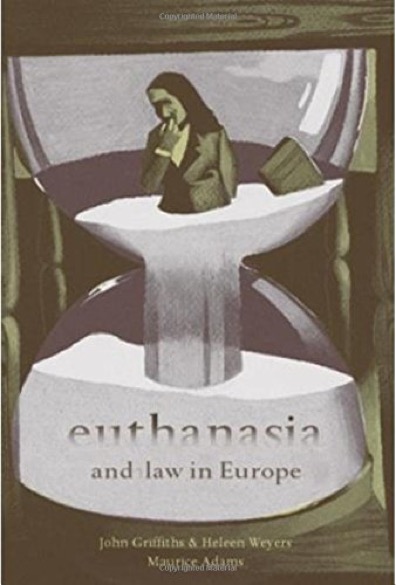
Bosshard G, Broeckaert B, Clark D, Materstvedt LJ, Gordijn B, Müller-Busch HC. (2008). «A role for doctors in assisted dying? An analysis of legal regulations and medical professional positions in six European countries». Journal of Medical Ethics; 34: 28–32.


Materstvedt LJ. (2008). «Hvilken rolle bør leger ha dersom dødshjelp legaliseres?» [What role should doctors have if euthanasia and physician-assisted suicide are legalised?] Tidsskrift for Den norske legeforening [Journal of the Norwegian Medical Association]; 128: 273.
Materstvedt LJ. (2008). «Filosofers globale rolle i dødshjelpdebatten» [The global role of philosophers in the euthanasia debate] Omsorg. Nordisk tidsskrift for palliativ medisin; 4: 19–25.
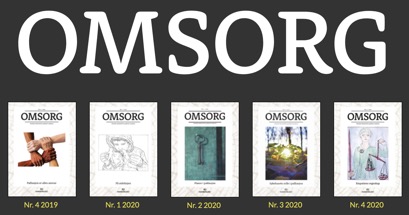
Materstvedt LJ, Husebø S. (2008). «Plikt til å dø?» [A duty to die?] Omsorg. Nordisk tidsskrift for palliativ medisin; 4: 1–2.
Juul Busch C, Materstvedt LJ, Benzein E. (2008). «Håb» [Hope] Omsorg. Nordisk tidsskrift for palliativ medisin; 3: 1–2.
Landmark BT, Materstvedt LJ. (2008). «Symptomlindring» [Symptom relief] Omsorg. Nordisk tidsskrift for palliativ medisin; 2: 1–2.
Materstvedt LJ, Førde R, Kaasa S, Borchgrevink PC. (2007). «Eutanasi – definisjonsmessige, etiske og kliniske betraktninger i et internasjonalt perspektiv» [Euthanasia – definitionwise, ethical and clinical considerations in an international perspective]. Kap. 8 i Kaasa S, red. Palliasjon. Nordisk lærebok. 2. utgave. Oslo: Gyldendal Akademisk, s. 153–178.
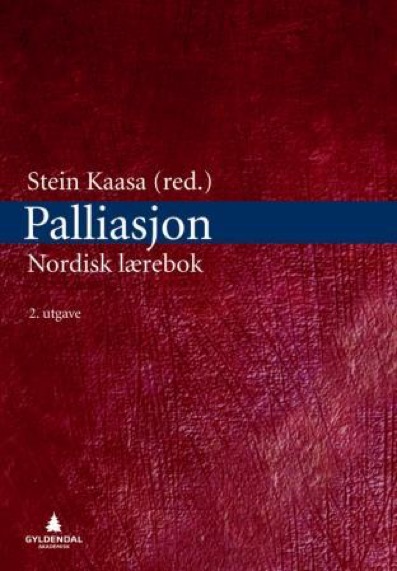
Materstvedt LJ. (2007). «Eutanasi kan være belastende for legen» [Euthanasia can be a heavy burden for the doctor]. Tidsskrift for Den norske lægeforening [Journal of the Norwegian Medical Association]; 127: 3051.
Materstvedt LJ. (2007). «Drapsfilosofi» [Philosophy of killing]. Tidsskrift for Den norske lægeforening [Journal of the Norwegian Medical Association]; 127: 2425–2426.
Materstvedt LJ. (2007). «En nefrolog om eutanasi» [A nephrologist on euthanasia]. Tidsskrift for Den norske lægeforening [Journal of the Norwegian Medical Association]; 127: 1832.
Materstvedt LJ. (2007). «Mindre bruk av eutanasi i Nederland» [Decrease in the use of euthanasia in the Netherlands]. Tidsskrift for Den norske lægeforening [Journal of the Norwegian Medical Association]; 127: 1759.
Materstvedt LJ. (2007). «Grenser for behandling» [Limits to treatment]. Tidsskrift for Den norske lægeforening [Journal of the Norwegian Medical Association]; 127: 1613.
Materstvedt LJ. (2007). «Must we accept death? A philosopher's view». European Journal of Palliative Care; 14: 70–72.
Materstvedt LJ. (2006). «Ethical issues»; part of Uganda country report. In: Wright M, Clark D. Hospice and Palliative Care in Africa: A Review of Developments and Challenges. Oxford: Oxford University Press; 216–218.
- Foreword by Sir Elton John
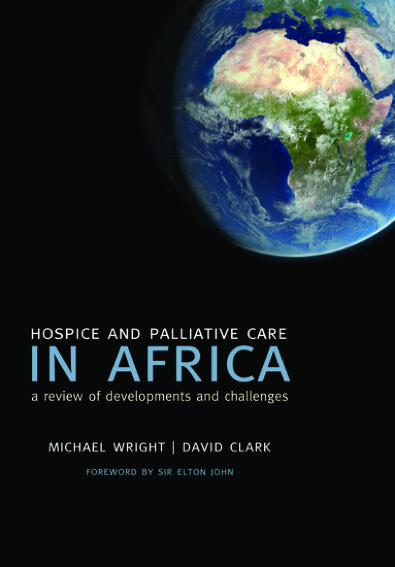
Materstvedt LJ. (2006). «Lost in translation?» European Journal of Palliative Care; 13: 207–209.
Materstvedt LJ. (2006). «The EAPC Ethics Task Force on Palliative Care and Euthanasia». European Journal of Palliative Care; 13: 69–71.
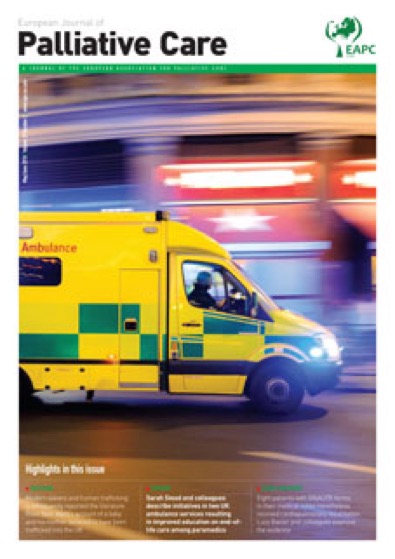
Materstvedt LJ, Syse A. (2006). «Helsejus og medisinsk etikk» [Health legislation and medical ethics]. Tidsskrift for Den norske lægeforening [Journal of the Norwegian Medical Association]; 126: 1081.
Materstvedt LJ, Syse A. (2006). «Døendes rettsstilling» [The legal standing of the dying]. Tidsskrift for Den norske lægeforening [Journal of the Norwegian Medical Association]; 126: 488–489.
Materstvedt LJ. (2006). «Lindrende sedering – problem eller plikt?» [Palliative sedation – problem or obligation?]. Tidsskrift for Den norske lægeforening [Journal of the Norwegian Medical Association]; 126: 430.
Materstvedt LJ. (2006) «Euthanasia and letting die». Palliative Medicine; 20: 49–50.
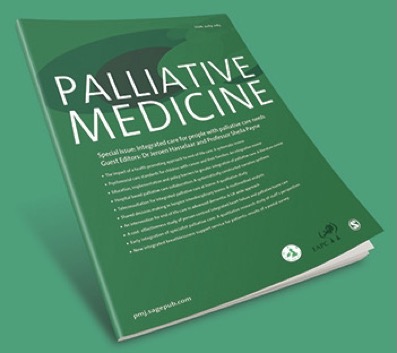
Materstvedt LJ. (2005). «Review of Blinderman D, Cherny N. ‘Existential issues do not necessarily result in existential suffering: lessons from cancer patients in Israel’.» Palliative Medicine; 19: 367–368.
Materstvedt LJ, Clark D, Ellershaw J, Førde R, Gravgaard A-M, Müller-Busch HC, Porta i Sales J, Rapin C-H. (2005). «Eutanasia ja lääkäriavusteinen itsemurha: EAPC:n eettisten kysymysten työryhmän näkemys». Suomen Lääkärilehti; 40: 4028–4031.
Filbet M, Materstvedt LJ. (2005). «Eutanasia ja lääkäriavusteinen itsemurha: EAPC:n kannanotto on suomennettu». Suomen Lääkärilehti; 40: 4027.
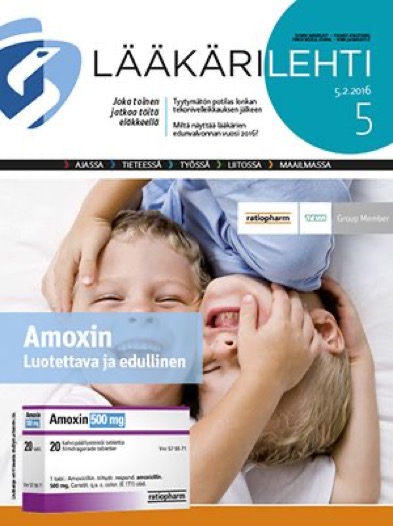
Materstvedt LJ, Clark D, Ellershaw J, Førde R, Gravgaard A-M, Müller-Busch HC, Porta i Sales J, Rapin C-H. (2005). «Ευθανασία και υποβοηθούμενη από τον ιατρό αυτοκτονία: η άποψη της Εξειδικευμένης Ομάδας Εργασίας για την Ηθική της EAPC». Hellenic Society of Palliative and Symptomatic Care of Cancer and Non Cancer Patients.
Kaasa S, Materstvedt LJ. (2005). «Πρόλογος στην ελληνική έκδοση». Hellenic Society of Palliative and Symptomatic Care of Cancer and Non Cancer Patients.
Materstvedt LJ. (2005). «Bør man ikke selv få lov til å bestemme hvordan man skal dø?» [Should individuals have the right to decide how to die?] I: Herrestad H, Mehlum L, red. Uutholdelige liv. Om selvmord, eutanasi og behandling av døende. Oslo: Gyldendal Akademisk, s. 108–132.
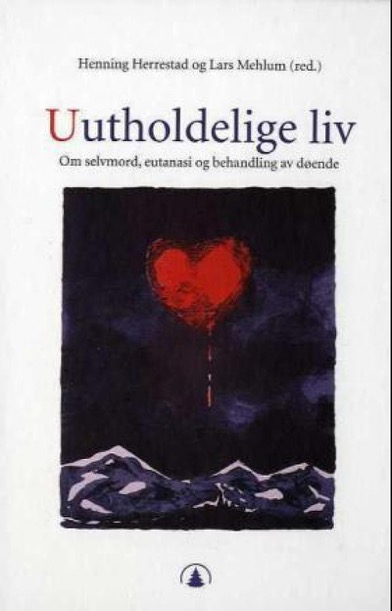
Materstvedt LJ. (2005). «Nozicks libertarianske ekstremisme og post-libertarianisme» [Nozick's libertarian extremism and post libertarianism]. Norsk filosofisk tidsskrift; 37: 201–210.
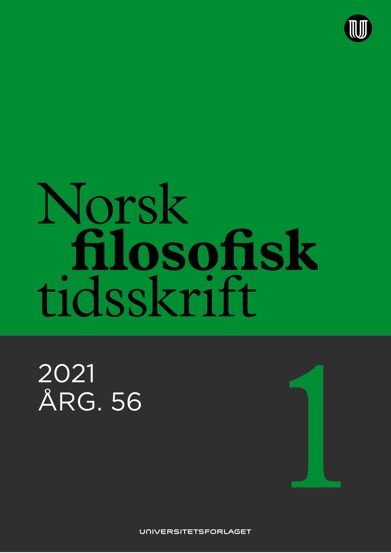
Materstvedt LJ, Syse A, Borchgrevink PC. (2005). «Straffelovkommisjonen om aktiv dødshjelp» [Law committee on active euthanasia]. Tidsskrift for Den norske lægeforening [Journal of the Norwegian Medical Association]; 125: 614–616.
Johansen S, Hølen JC, Kaasa S, Loge JH, Materstvedt LJ. (2005). «Attitudes towards, and wishes for, euthanasia in advanced cancer patients at a palliative medicine unit». Palliative Medicine; 19: 454–460. [Download entire interview guide with questions – Norwegian original here.]
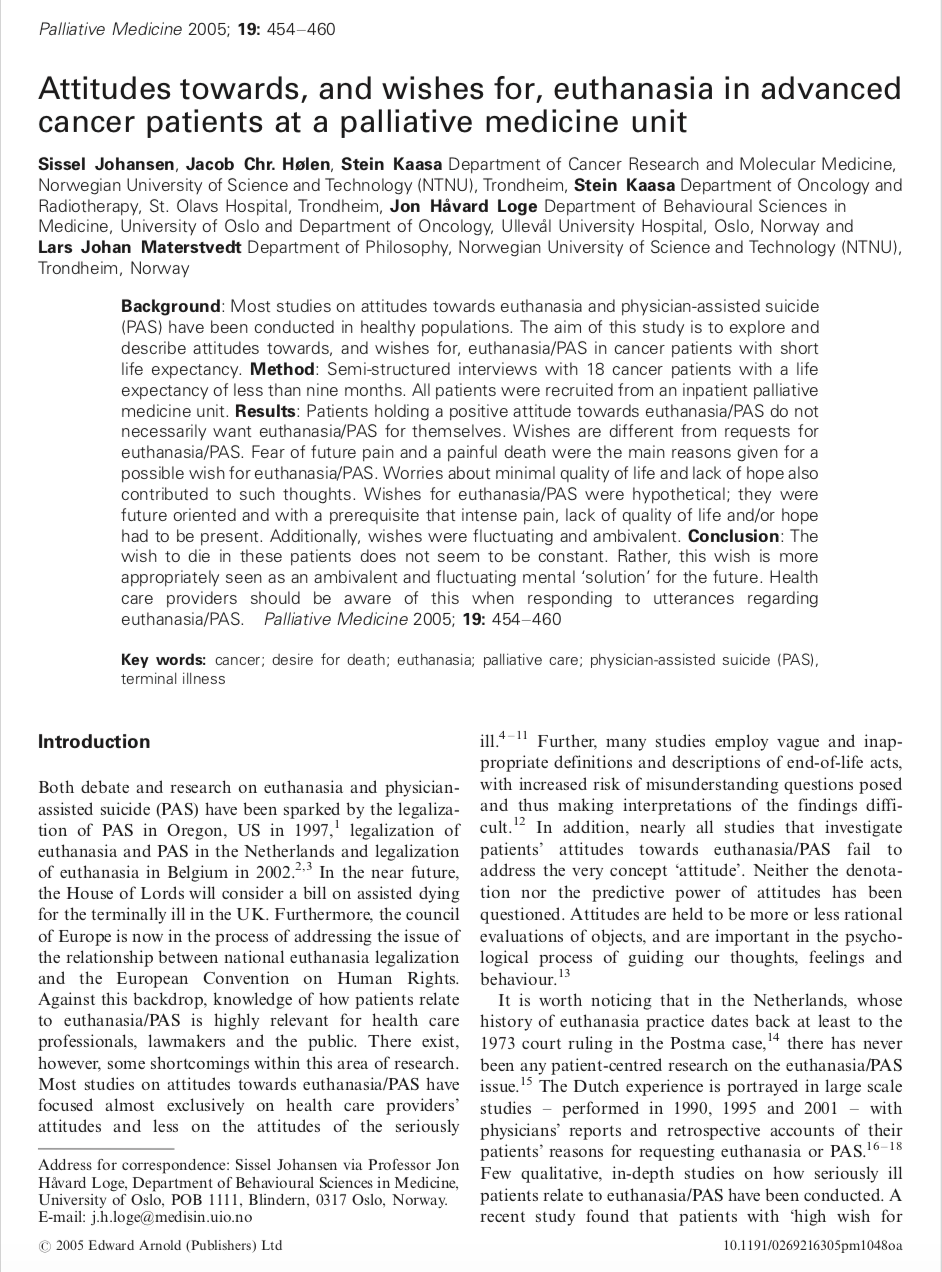
Materstvedt LJ, Kaasa S. (2004). «Introduksjon til: Medisin, filosofi, medisinsk etikk, og medisinsk forskningsetikk» [Introduction to: Medicine, philosophy, medical ethics and medical research ethics]. I: Kaasa, S, Rønning, M, Aakre, M red. Festskrift. Seksjon lindrende behandling gjennom 10 år. Trondheim: St. Olavs Hospital HF og NTNU, s. 132–145.
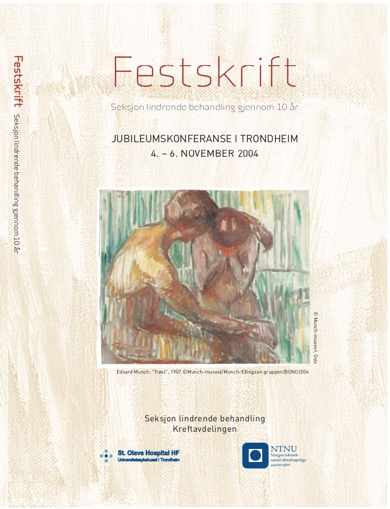
Materstvedt LJ. (2004). «Bruken av autonomiargumentet i dødshjelpdebatten – i lys av 'fire-prinsipper'-tilnærmingen til helseetikk» [The argument of autonomy in the euthanasia debate – in the light of the 'four principles' approach to health care ethics]. I: Kaasa, S, Rønning, M, Aakre, M red. Festskrift. Seksjon lindrende behandling gjennom 10 år. Trondheim: St. Olavs Hospital HF og NTNU, s. 192–214.
Materstvedt LJ. (2004). «Om vi må akseptere døden?» [Is death acceptable?] I: Ranheim U, red. På talefot med døden – beretninger om livet. Lunner: Uranus forlag, s. 76–79.
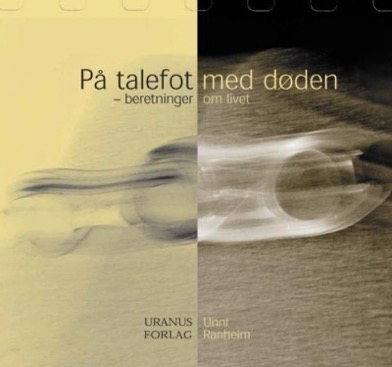
Materstvedt LJ. (2004). «Heller god norsk enn dårlig engelsk?» [Good Norwegian rather than poor English?] I: Simonsen DF, red. Språk i kunnskapssamfunnet. Engelsk – elitenes nye latin? Oslo: Gyldendal Akademisk, s. 61–69.
Innhold
- Hvorfor skrive på norsk?
- Skillet forskning/undervisning
- Fra norsk til engelsk = kvalitetsforringelse?
- Dårligere vitenskap ved bruk av engelsk
- To forslag
- Vitenskapelige gevinster ved å skrive på norsk
- For dyrt?
- Litteratur
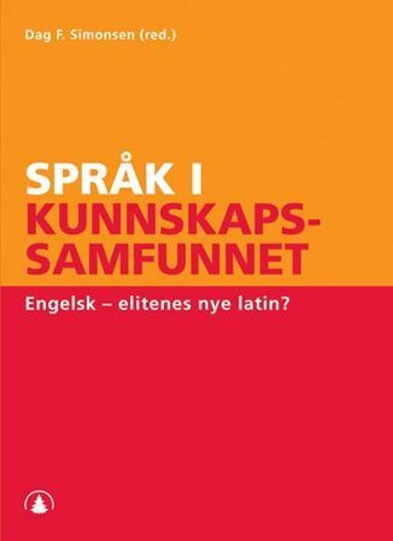
Materstvedt LJ, Hegvik J-A. (2004). «Svar til Førde R, for Rådet for legeetikk: Respiratorbehandling og etikk» [Reply to Førde R, on behalf of the Norwegian Medical Association's Council of Ethics: Respirator treatment and ethics]. Tidsskrift for Den norske lægeforening [Journal of the Norwegian Medical Association]; 124: 3264.
Materstvedt LJ, Hegvik J-A. (2004). «Svar til Myskja BK: Organdonasjon og moralfilosofi» [Reply to Myskja BK: Organ donation and moral philosophy]. Tidsskrift for Den norske lægeforening [Journal of the Norwegian Medical Association]; 124: 3263.
Materstvedt LJ, Hegvik J-A. (2004). «Organdonasjon, elektiv ventilasjon og etikk» [Organ donation, elective ventilation and ethics]. Tidsskrift for Den norske lægeforening [Journal of the Norwegian Medical Association]; 124: 2501–2503.
Materstvedt LJ, Clark D, Ellershaw J, Førde R, Gravgaard A-M, Müller-Busch HC, Porta i Sales J, Rapin C-H. (2004). «Euthanasie und ärztlich unterstützter Suizid: eine Stellungnahme der Ethics Task Force der European Association for Palliative Care (EAPC)». Zeitschrift für Palliativmedizin; 5: 102–106.
Kaasa S, Materstvedt LJ. (2004). «Euthanasie und ärztlich unterstützter Suizid». Zeitschrift für Palliativmedizin; 5: 87.
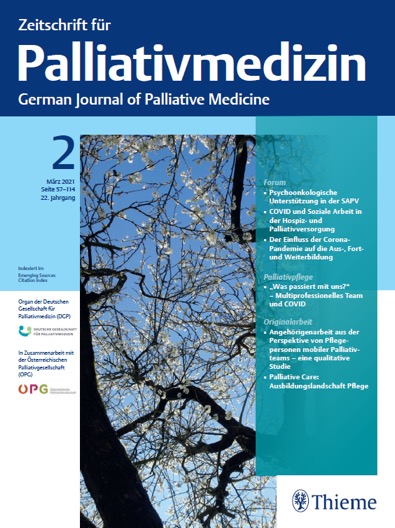
Materstvedt LJ, Clark D, Ellershaw J, Førde R, Gravgaard A-M, Müller-Busch HC, Porta i Sales J, Rapin C-H. (2004). «Eutanasia e suicidio assistito dal medico: il punto di vista di una Task Force sull’etica dell’EAPC». Rivista italiana di cure palliative; 1: 42–46.
Kaasa S, Materstvedt LJ. (2004). «La versione italiana del documento dell’EAPC». Rivista italiana di cure palliative; 1: 41–42.

Hegstad A-C, Materstvedt LJ, Kaasa S. (2004). «Undervisning i medisinsk etikk: Trondheims-modellen» [Teaching medical ethics: the Trondheim model]. Tidsskrift for Den norske lægeforening [Journal of the Norwegian Medical Association]; 124: 2104–2106.
Materstvedt LJ, Førde R. (2003). «Intens debatt om eutanasi innen europeisk palliativ medisin» [Intense debate on euthanasia within the European palliative care]. Tidsskrift for Den norske lægeforening [Journal of the Norwegian Medical Association]; 123: 2735–2737.
Materstvedt LJ. (2003). «Euthanasia: on slippery slopes and vulnerable patients». Palliative Medicine; 17: 650–651.
Materstvedt LJ. (2003). «Palliative care on the 'slippery slope' towards euthanasia?» Palliative Medicine; 17: 387–392.
Materstvedt LJ, Clark D, Ellershaw J, Førde R, Gravgaard A-M, Müller-Busch HC, Porta i Sales J, Rapin C-H. (2003). «Eutanázia és asszisztált öngyilkosság az EAPC Etikai munkacsoportjának szemszögébool». Kharon Thanatológiai Szemle; 3.
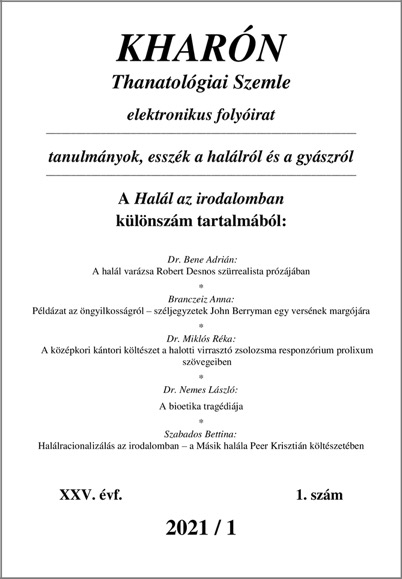
Materstvedt LJ, Clark D, Ellershaw J, Førde R, Gravgaard A-M, Müller-Busch HC, Porta i Sales J, Rapin C-H. (2003). «Euthanasie et suicide médicalement assisté: point de vue du groupe de réflexion éthique de'l EAPC». Journal Européen de Soins Palliatifs; 10: 63–66.
Materstvedt LJ, Clark D, Ellershaw J, Førde R, Gravgaard A-M, Müller-Busch HC, Porta i Sales J, Rapin C-H. (2003) «Euthanasia and physician-assisted suicide: a view from an EAPC Ethics Task Force». Palliative Medicine; 17: 97–101.


Materstvedt LJ, Kaasa S. (2002). «Euthanasia and physician-assisted suicide in Scandinavia – with a conceptual suggestion regarding international research in relation to the phenomena». Palliative Medicine; 16: 17–32.
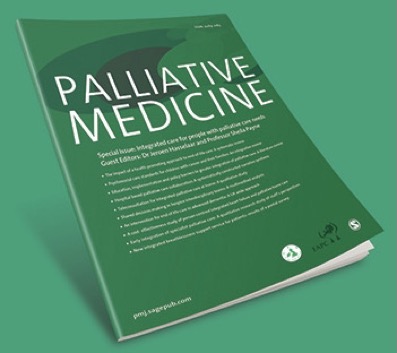
Materstvedt LJ. (2002). «Livskvalitet – noen filosofiske betraktninger» [Quality of life – some philosophical considerations]. Parabel. Tidsskrift for filosofi og vitenskapsteori; 2: 33–41.
Innhold
- Sammendrag
- Innledning: om livskvalitet i livets sluttfase – og livet gjennom
- Sokrates om livskvalitet og John Stuart Mill om den «fornøyde tosken»
- Platon: det abstrakte og livskvalitet
- Aristoteles: fornuftsbruk er livskvalitet
- Antikke vs. moderne forestillinger om livskvalitet
- Peter Wessel Zapffe og Herman Tønnesen: tenkeevnen som permanent trussel mot livskvalitet
- «WHO-mennesket»: totalt velvære og 100% livskvalitet
- «The Experience Machine»: hva om komplett livskvalitet var mulig?
- Litteratur
Materstvedt LJ. (2002). «Engelsk som arbeidsspråk i medisinstudiet – et feilgrep» [English as working language during medical education – a pitfall]. Tidsskrift for Den norske lægeforening [Journal of the Norwegian Medical Association]; 122: 1913.
Materstvedt LJ. (2002). «Palliative care in seven European countries». Medicine, Health Care and Philosophy; 5: 307–309.
Materstvedt LJ. (2002). «Ethics, palliative care and euthanasia». European Journal of Palliative Care; 9: 215–216.
Materstvedt LJ. (2001). «Machiavellis Fyrsten: Menneskets ondskap og egoisme som analytiske bærebjelker i forståelsen av politikk og historie» [Machiavelli's The Prince: human wickedness and egoism as analytical tools in the understanding of politics and history]. Parabel. Tidsskrift for filosofi og vitenskapsteori; 1: 9–24.
Innhold
- Sammendrag
- Om personen Machiavelli, om Fyrsten, og om dens historisk-politiske bakgrunn
- Statsmannskunsten i lys av menneskets ondskap
- Nødvendig og unødvendig maktbruk
- Skillet mellom frykt og hat
- Er det bedre å være elsket enn fryktet?
- Fyrstens rådgivere
- Om løgnen og sannhetens funksjonalitet: Ronald Reagan som eksempel?
- «Reven» og «løven» som modeller for fyrstens atferd
- Franklin Roosevelt og Pearl Harbor: et eksempel på machiavellisme?
- Samfunnsvitenskapelig deskriptivitet og historiefilosofi
- Skjebnens («Fortuna») rolle i menneskers og staters liv
- Fortuna som vitenskapelig restkategori
- Menneskesyn
- Statens «natur»
- Militærvesenet
- Krigføring
- Gode og dårlige stater
- Om lovgivningen i samfunnet
- Skillet mellom offentlig og privat moral
- Religionens plass i samfunnet
- Konklusjon: et usminket bilde av verden
- Noter
Materstvedt LJ. (2001). «Om dødshjelp i Nederland – og om debatten i Norge» [Euthanasia in the Netherlands – and the debate in Norway]. Tidsskrift for Den norske lægeforening [Journal of the Norwegian Medical Association]; 121: 2965–2969.
Materstvedt LJ. (2000). «Om filosofi og demokrati» [On philosophy and democracy]. I: Dybvig M, Molander B, Øfsti A, red. I et filosofisk terreng. Festskrift til Sverre Sløgedal. Trondheim: NTNU, Filosofisk institutts publikasjonsserie; 34: 139–153.
Innhold
- Innledning
- Samfunnet sett «fra utsiden»
- Filosofen som superpolitiker
- Filosofiens natur
- Kongefilosofen på ontologisk og epistemologisk sandgrunn?
- Filosofi kontra demokrati?
- Det demokratiske paradoks
- Fra demokratisme til totalitarisme
Materstvedt LJ. (2000). «Aktiv dødshjelp og aktiv livshjelp – noen definisjoner og noen problemer» [Active help in dying and active help in living – some definitions and some problems]. I: Langangen JE, Aakre M, red. Livshjelp eller dødshjelp? Oslo: Verdikommisjonen, s. 16–35.
Kaasa S, Materstvedt LJ. (2000). «Forskning innen palliativ medisin» [Palliative medicine research]. Omsorg. Nordisk tidsskrift for palliativ medisin; 2: 14–18.
Innhold
- Introduksjon
- Metodologiske overveielser
- Ulike vitenskapstyper – og hva som kjennetegner forskning innen dem
- Krav til dokumentasjon i helsevesenet
- Forskning vs. kvalitetssikring
- Etiske aspekter
- Metodologiske overveielser
- Minimumskrav til forskningsprosjekter
- Konklusjon
- Referanser
Materstvedt LJ, Kaasa S. (2000). «Er terminal sedering aktiv dødshjelp?» [Is terminal sedation active euthanasia?] Tidsskrift for Den norske lægeforening [Journal of the Norwegian Medical Association]; 120: 1763–1768.
Materstvedt LJ. (1999). «Etikksider på Internett» [Ethics websites on the Internet]. Tidsskrift for Den norske lægeforening [Journal of the Norwegian Medical Association]; 119: 4251.
Materstvedt LJ. (1999). «Sentrale verdier» [Key values]. I: Norges offentlige utredninger – NOU 1999: 2. Livshjelp: Behandling, pleie og omsorg for uhelbredelig syke og døende. Avsnitt 5.4, Kapittel 5, Verdier og holdninger.
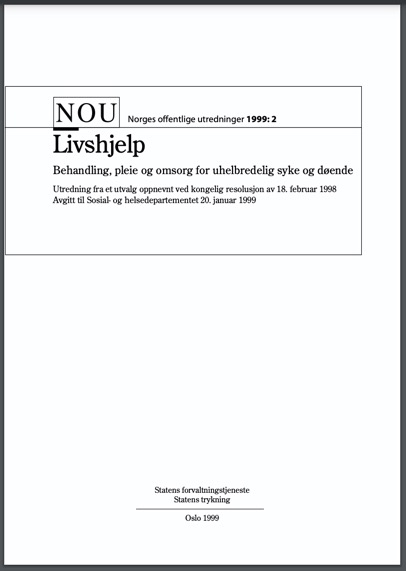
Materstvedt LJ. (1999). «What philosophers can’t do: boundaries of Apel’s transcendental-pragmatic philosophy». In: Bøe S, Molander B, Strandhagen B, red. I første, andre og tredje person. Festskrift til Audun Øfsti. Trondheim: NTNU, Filosofisk institutts publikasjonsserie; 28: 255–264.
Contents
- Introductory
- «Warum rational sein?»
- Coercive philosophy and «knockdown» arguments
- About Unhintergehbaren Präsuppositionen and the concept of Performativen Selbstwiderspruch
- How to be both rational and inconsistent and get away with it – and how to get caught
- A notice on instrumental rationality
- The rational existentialist pessimist and the Letztbegründung
- Conclusion: what philosophers can’t do (in principle)
- Works cited

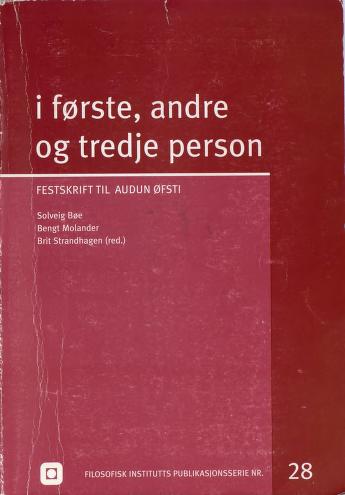
Materstvedt LJ. (1999). «Hermeneutikk, begrepsrelativisme og normativitet» [Hermeneutics, concept relativism and normativity]. Parabel. Tidsskrift for filosofi og vitenskapsteori; II/2: 55–70.
Innhold
- Innledning
- Kategoriene «forklaring» og «forståelse»
- Hermeneutikkens oppgave
- Vilkår for hermeneutisk vitenskap
- Forsøk på eliminering av den hermeneutiske sirkel
- Empiristisk samfunnsvitenskap og sosiale fenomener
- Meningsbegrepet: erfaringsmening og språklig mening
- Intersubjektive meninger
- Begrepsrelativisme og rekonstruksjonisme
- Empiristisk samfunnsvitenskap og normative implikasjoner
- Noter
- Appendiks
Kaasa S, Materstvedt LJ. (1999). «Håp» [Hope]. Tidsskrift for Den norske lægeforening [Journal of the Norwegian Medical Association]; 119: 1313–1315.
Innhold
- Håp og livskvalitet
- Former for håp, uvisshet og frykt
- Håp i et klinisk perspektiv
- To grunnleggende spørsmål
- Endring av håp – og mangfoldet av håp
- Litteratur
Materstvedt LJ. (1997). Rights, Paternalism, and the State. A Kantian Exploration of Nozick’s Political Thought. Ph.D. (dr.art.) dissertation. Faculty of Arts, Norwegian University of Science and Technology (NTNU). Trondheim, Norway: NTNU's dissertation series. 236 pages. [Read it online here]


Materstvedt LJ. (1994). «Liberaleren Charles Taylor som anti-liberaler?» [The liberal philosopher Charles Taylor as anti liberal?] Norsk filosofisk tidsskrift; 29: 37–59.
Innhold
- Innledning
- Atomisme og kommunitarisme
- Taylors forståelse av politisk atomisme
- Kymlickas utlegning av Taylors atomisme-argument
- Beiner om Taylor
- Foreløpig oppsummering
- Taylor som anti-liberaler?
- Konklusjon

Materstvedt LJ. (1994). «What’s wrong with Rawls’ political liberalism». In: Høibraaten H, Sløgedal S, red. Festskrift til Ingemund Gullvåg. Trondheim: Universitetet i Trondheim, Den allmennvitenskapelige høgskolen, Filosofisk institutts publikasjonsserie; 19: 148–162.
Contents
- Introductory remarks
- «The fact of pluralism»
- The role of political liberalism
- The method of avoidance
- The meaning of persons being «free and equal»
- A model case of an overlapping consensus
- A view that might not join the overlapping consensus
- Problems with utilitarianism
- Method of avoidance does not imply scepticism
- Why the method of avoidance might fail
- The idea of public reason and the idea of a well-ordered society in Political Liberalism
- The need for outweighing some values
- Conclusion: what’s wrong – and what’s right – with Rawls’ political liberalism

